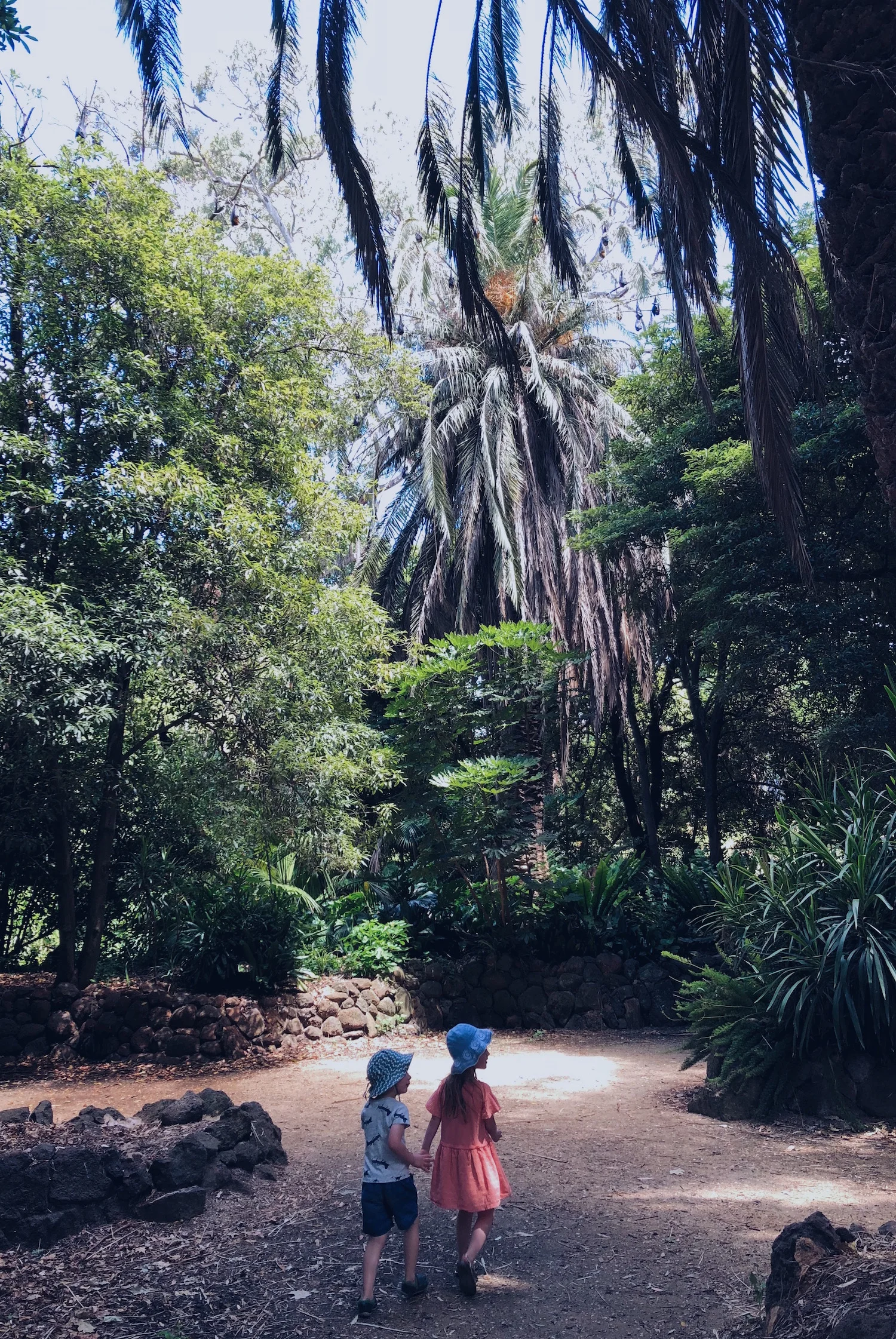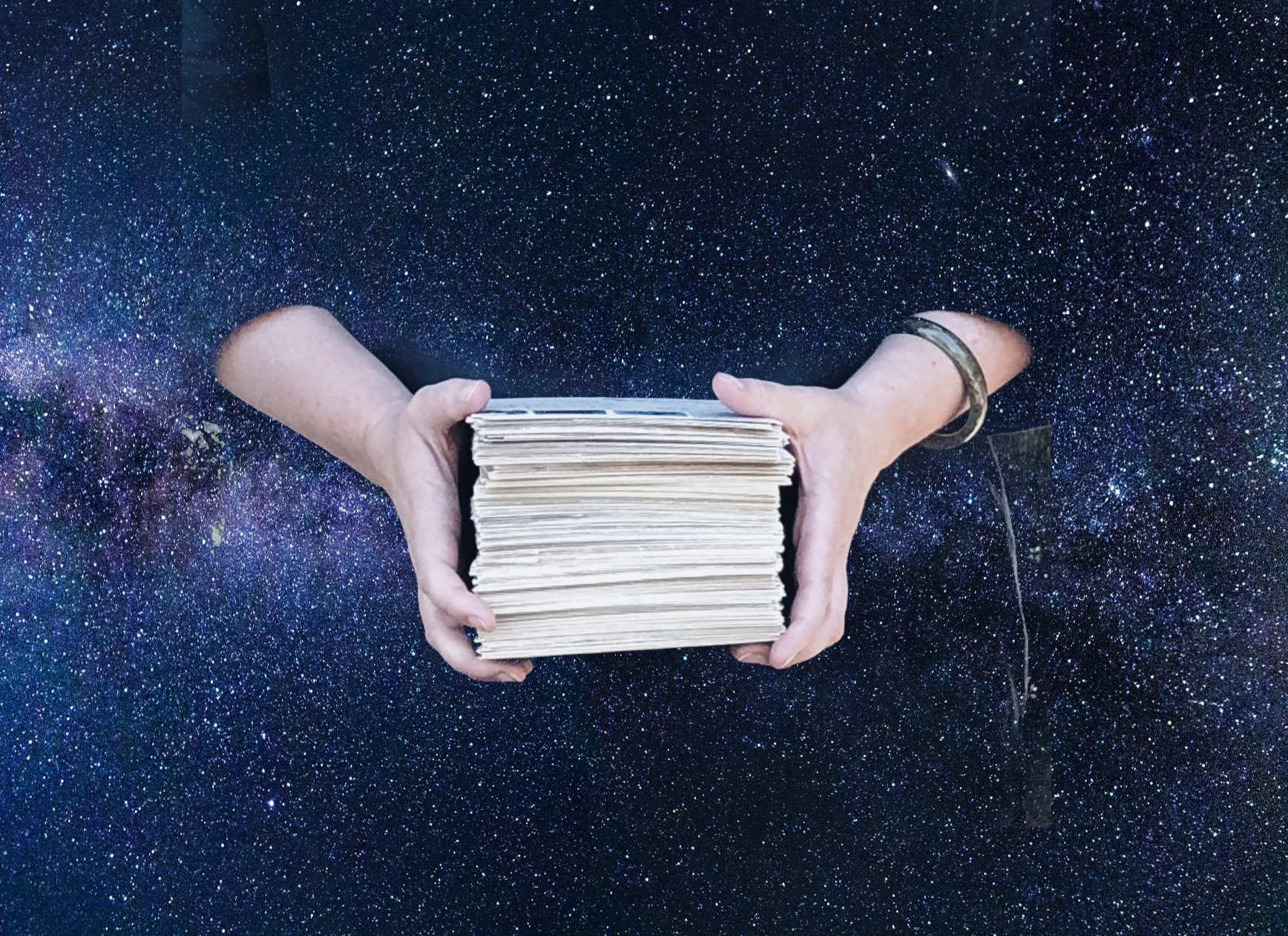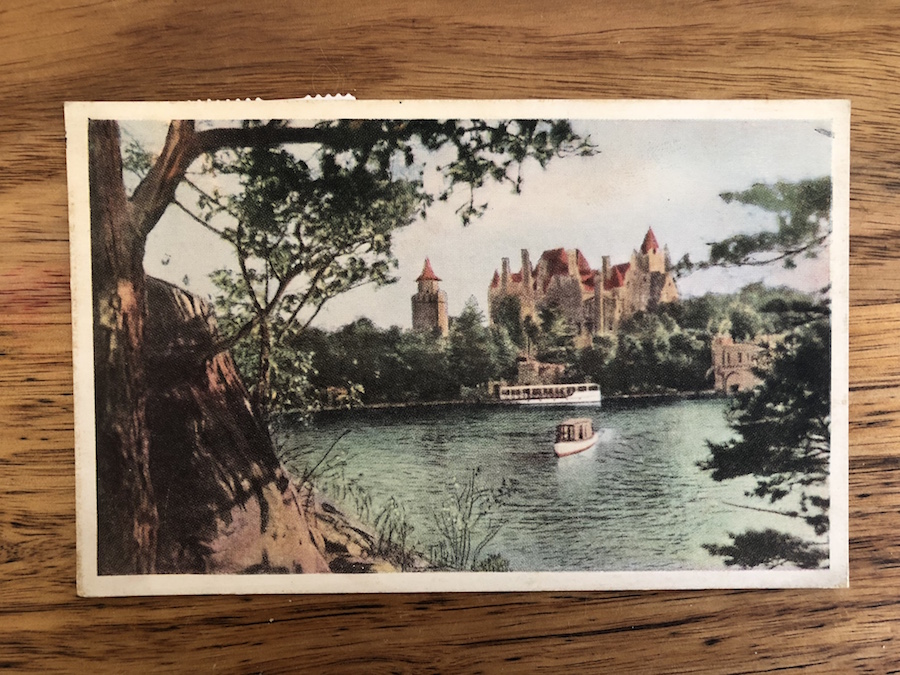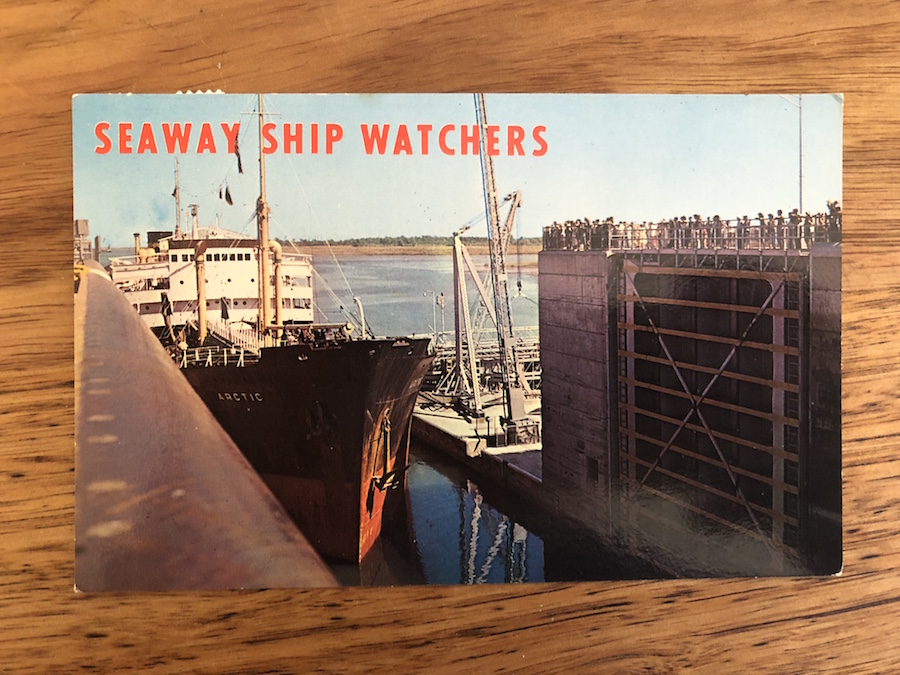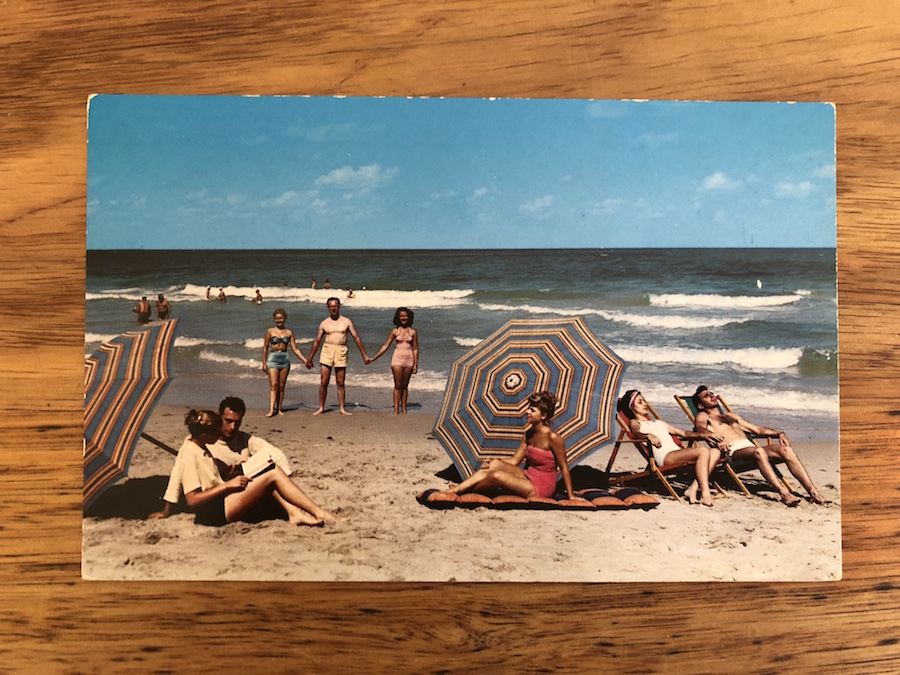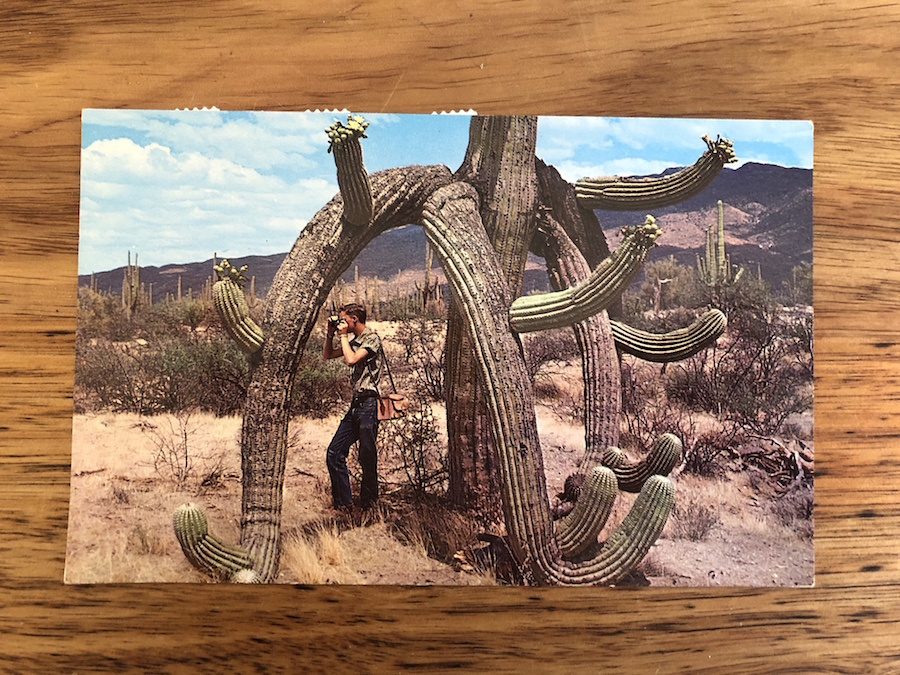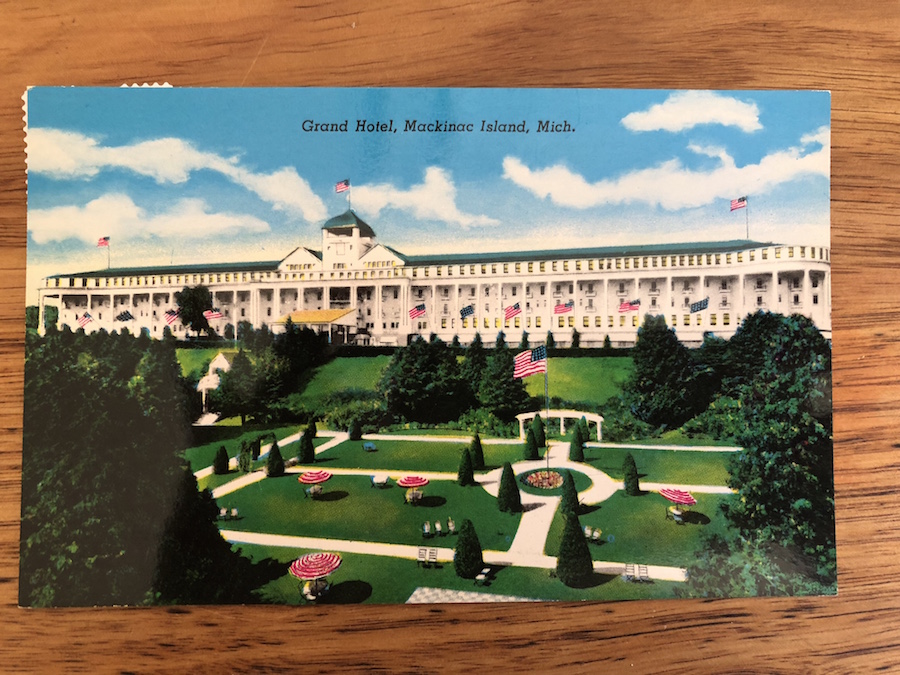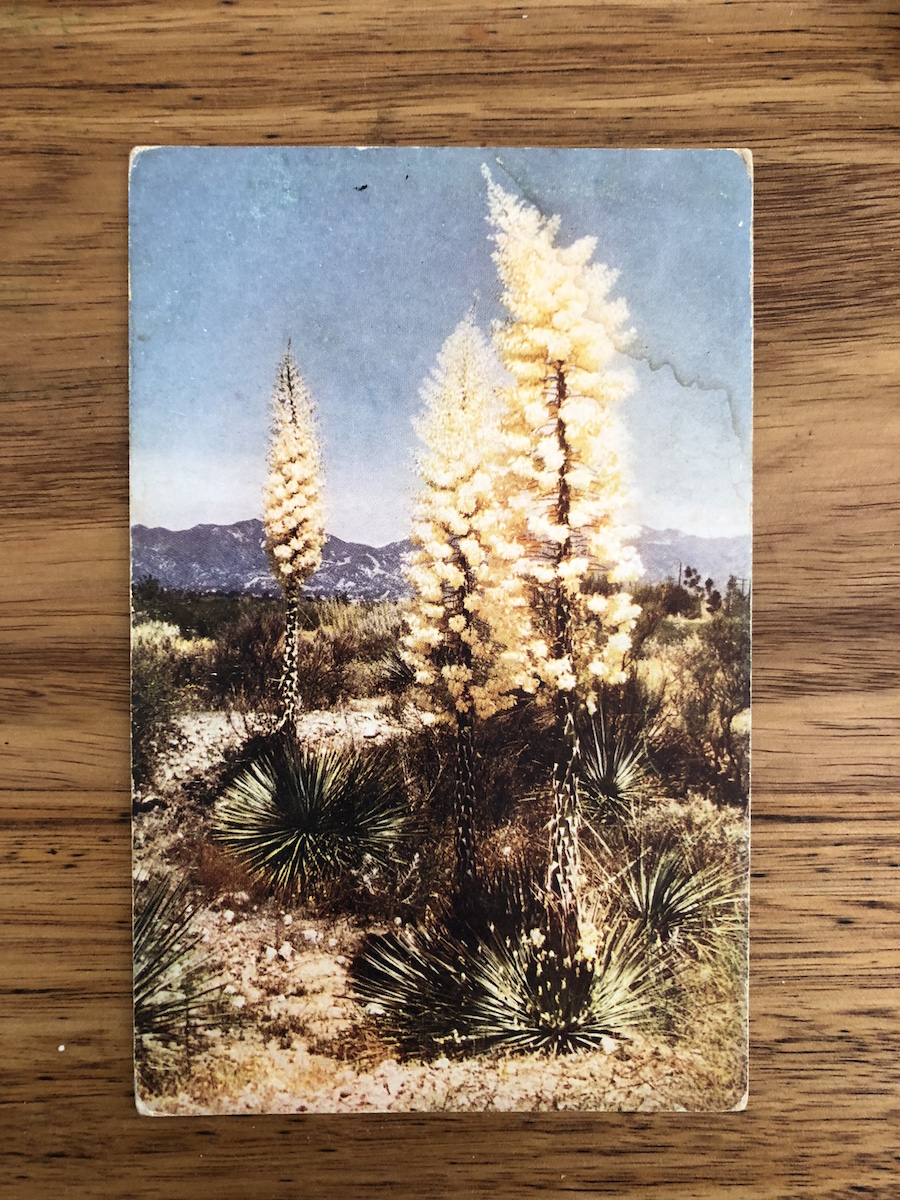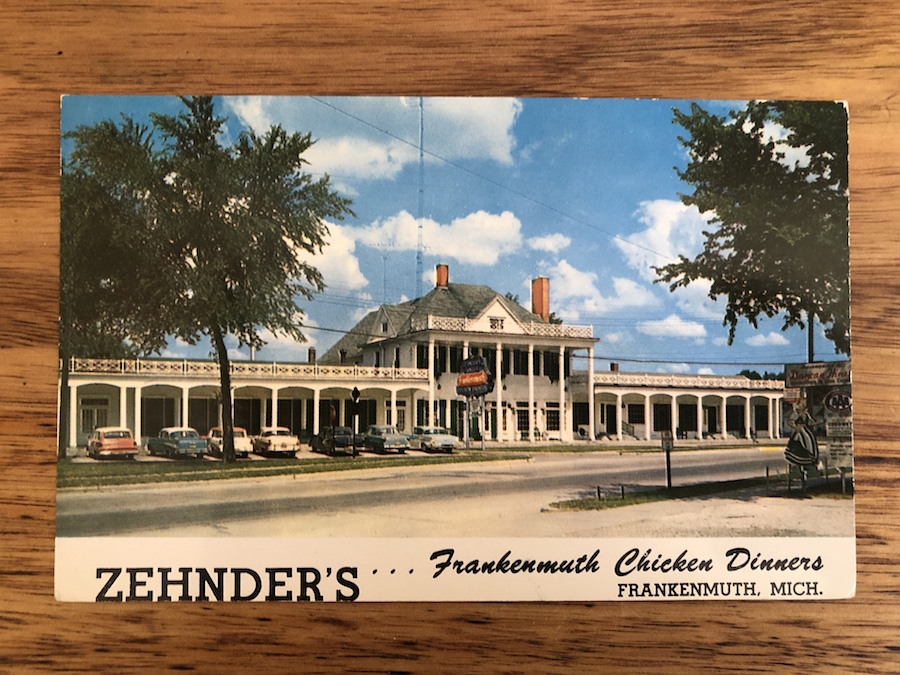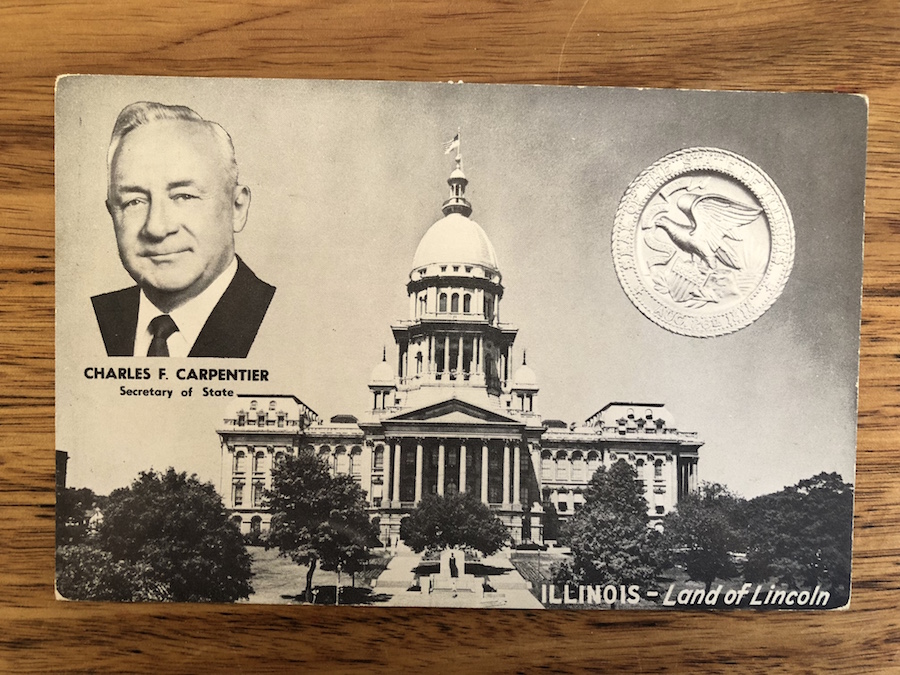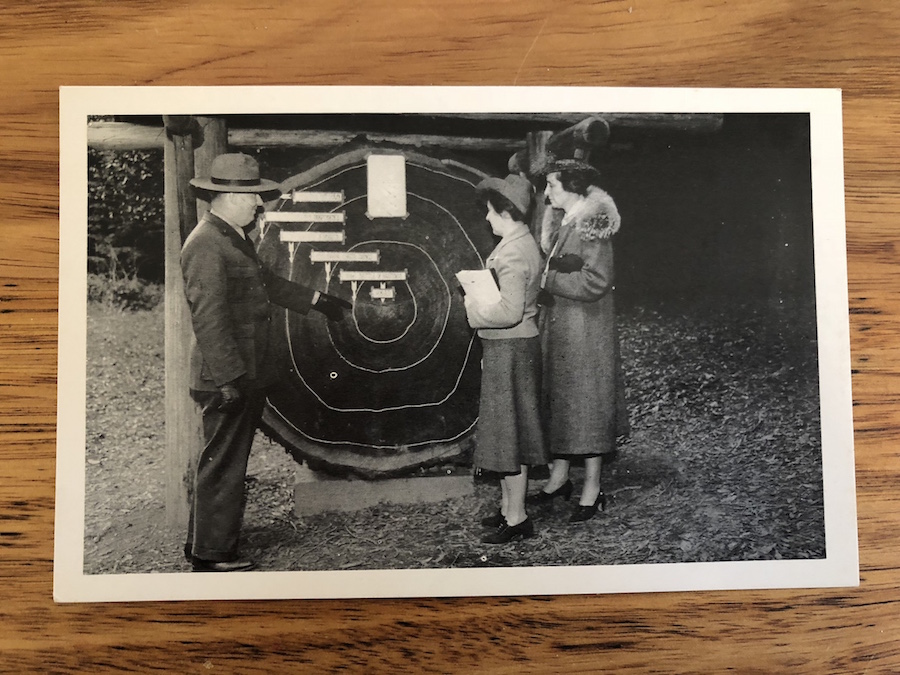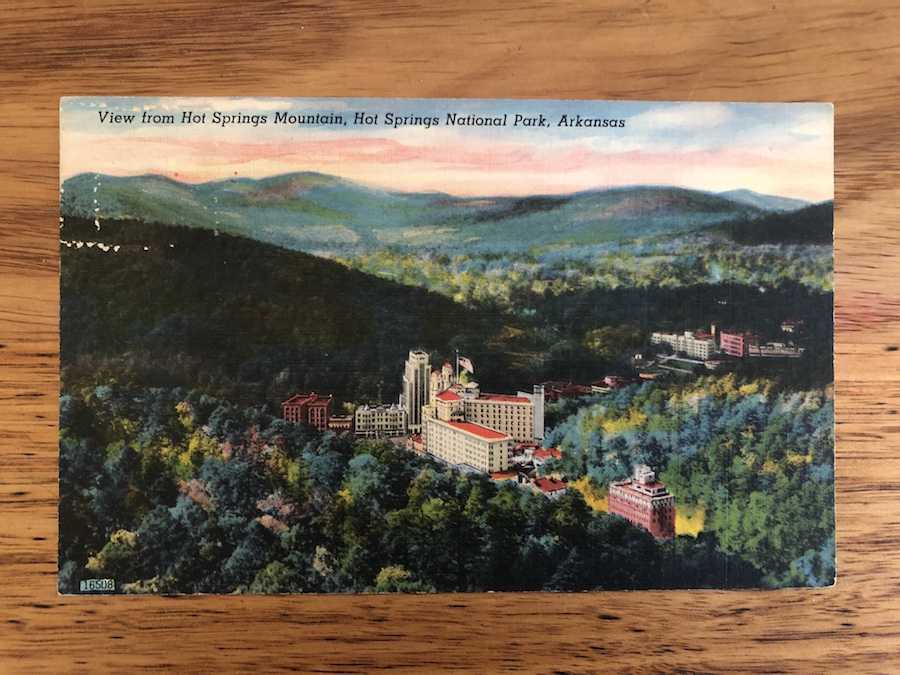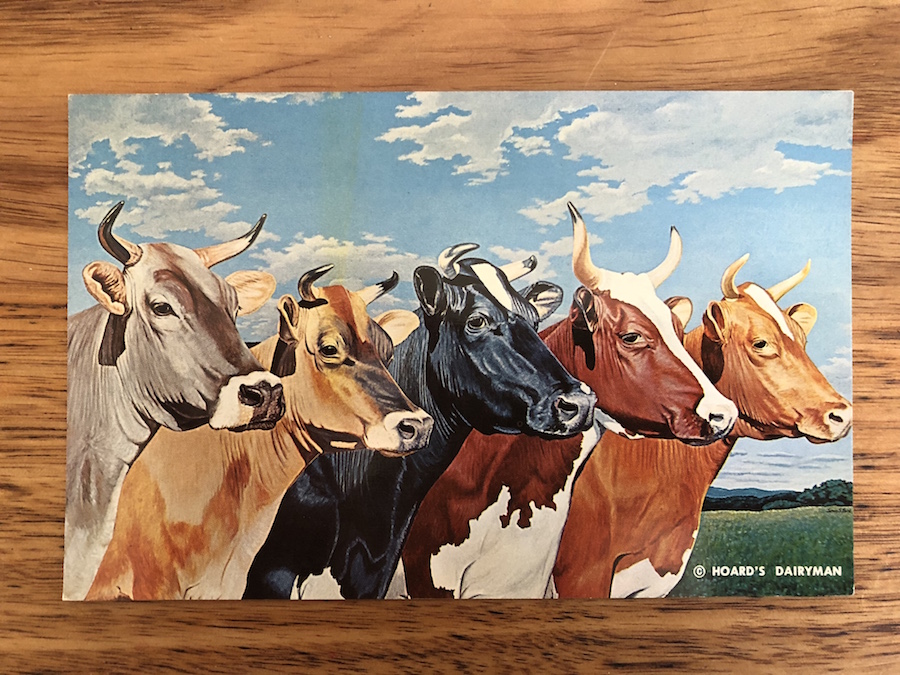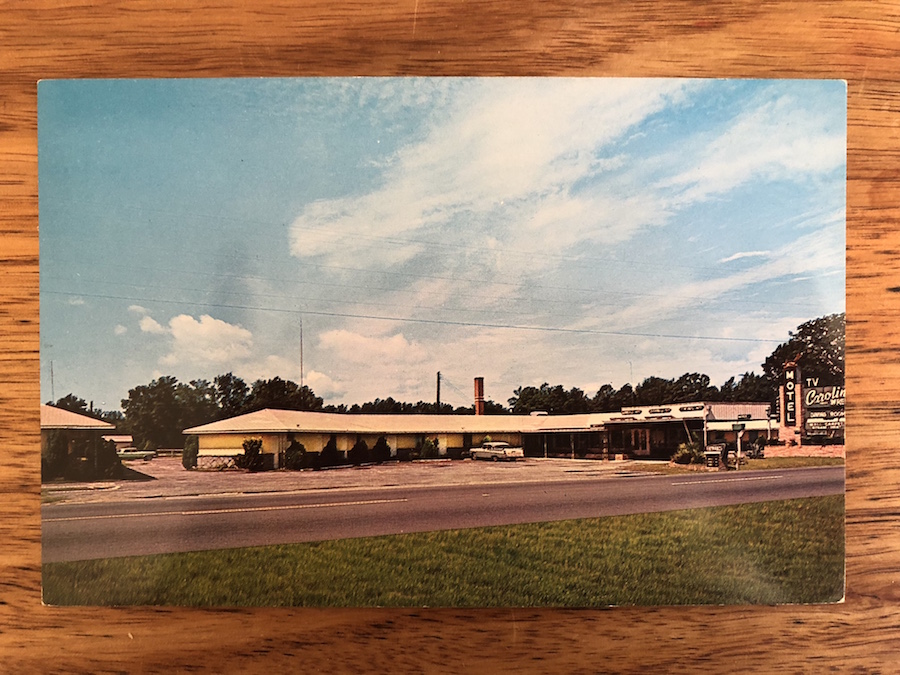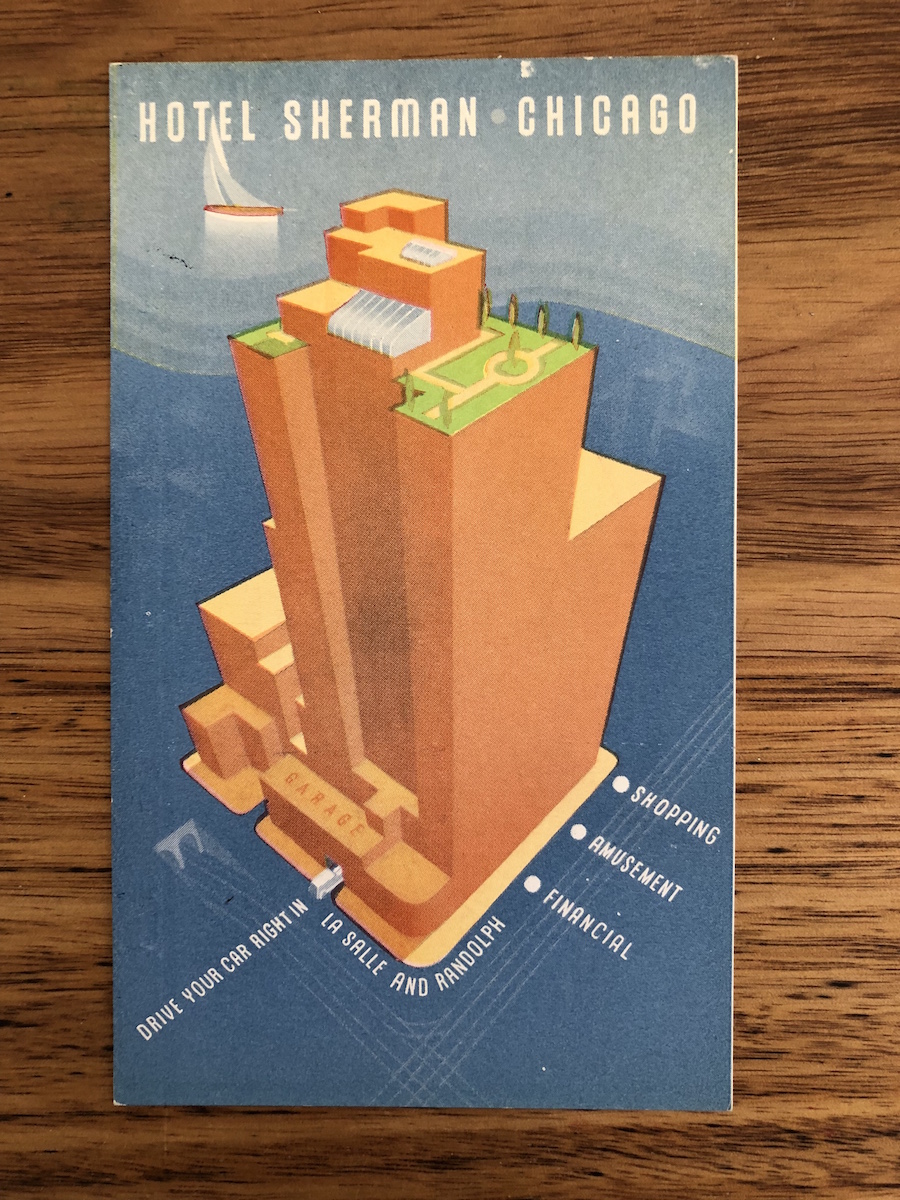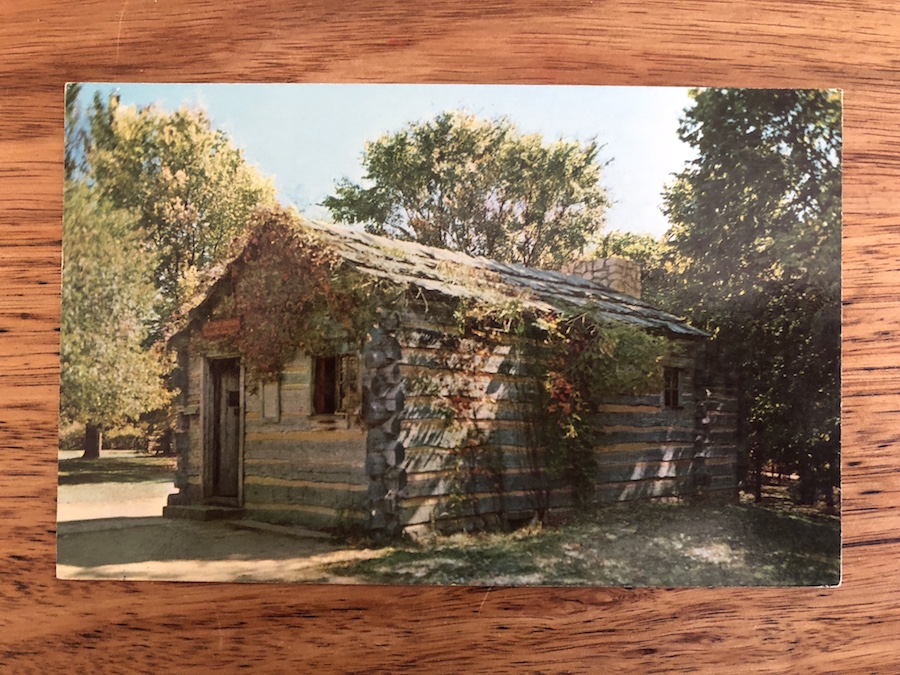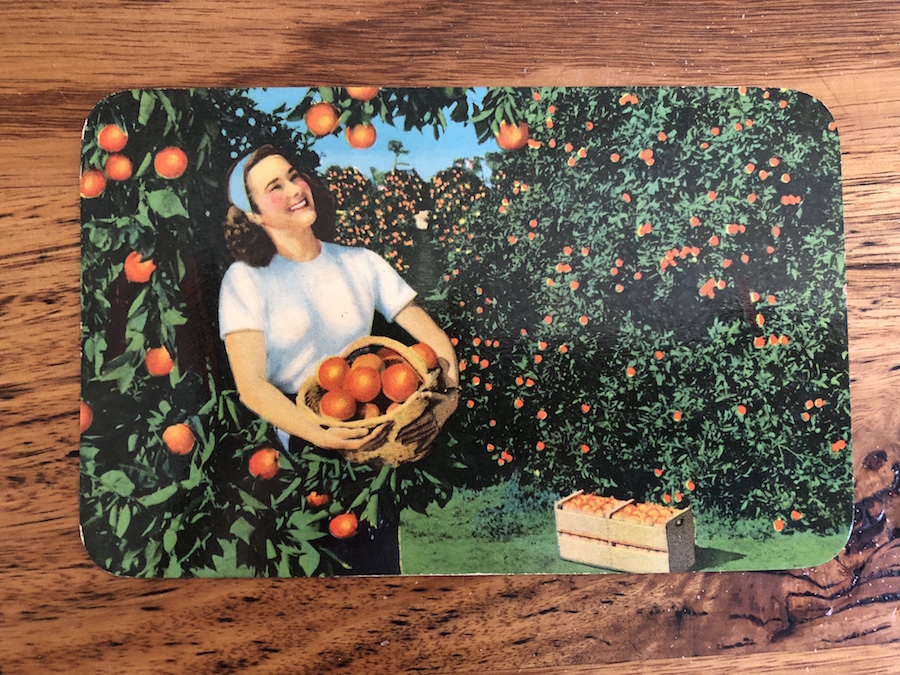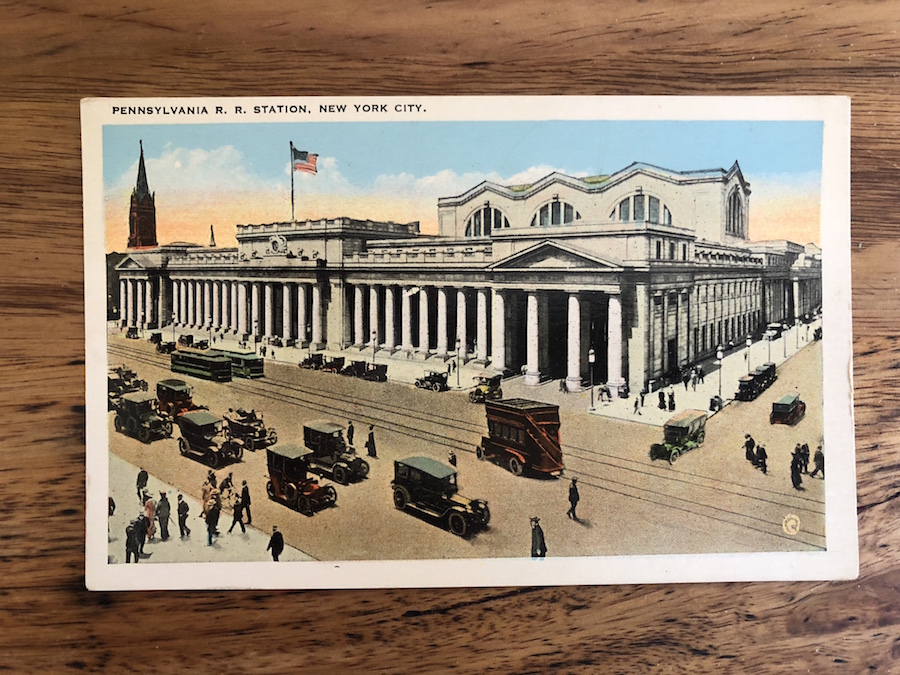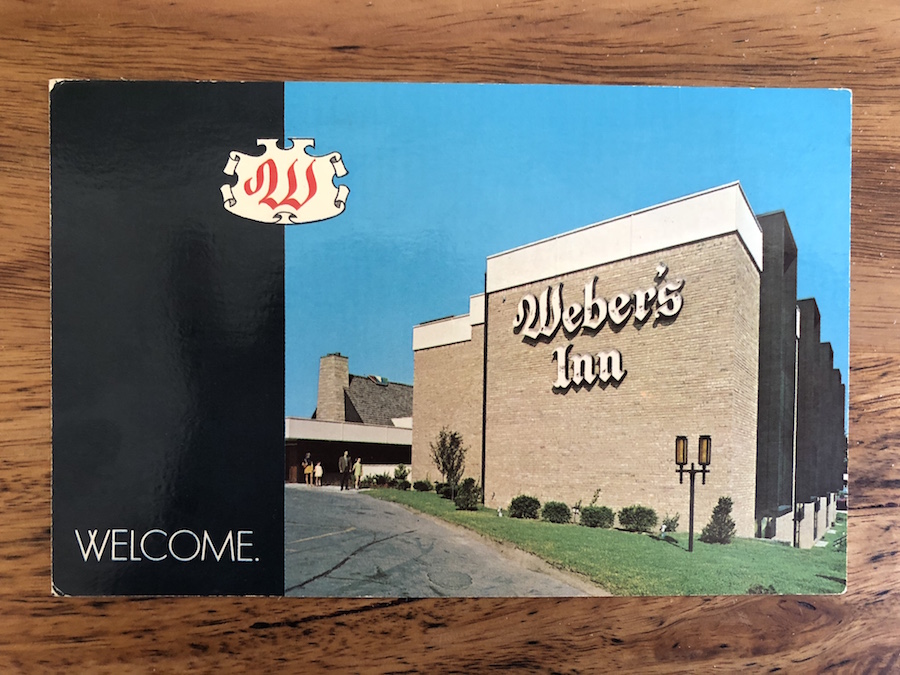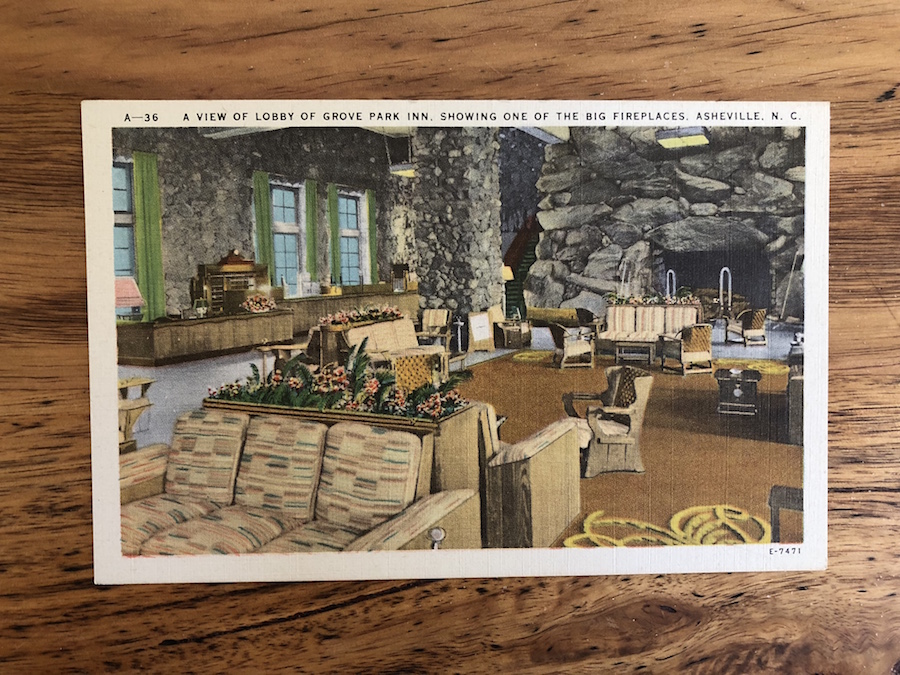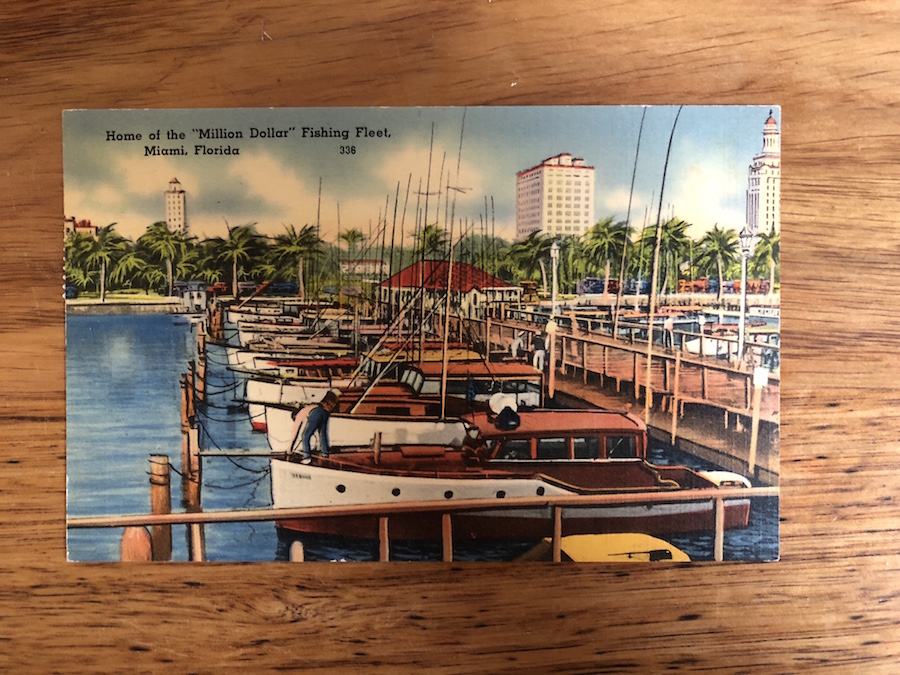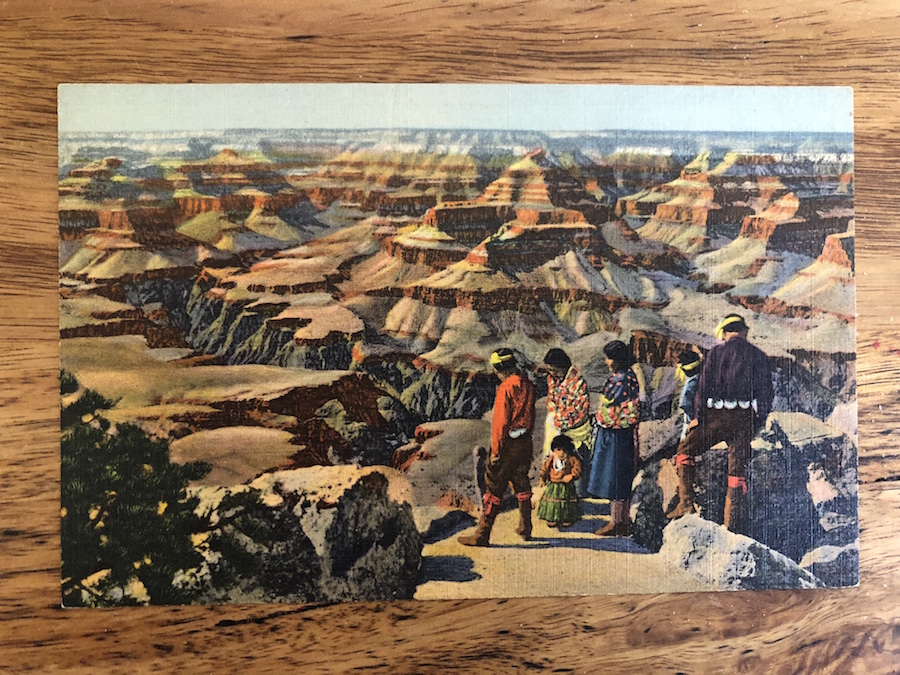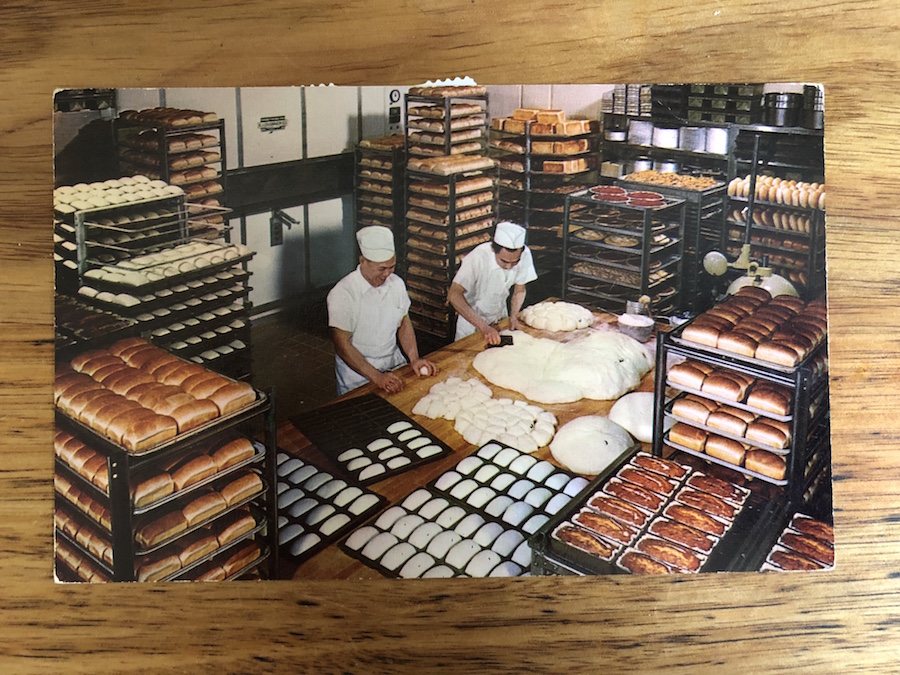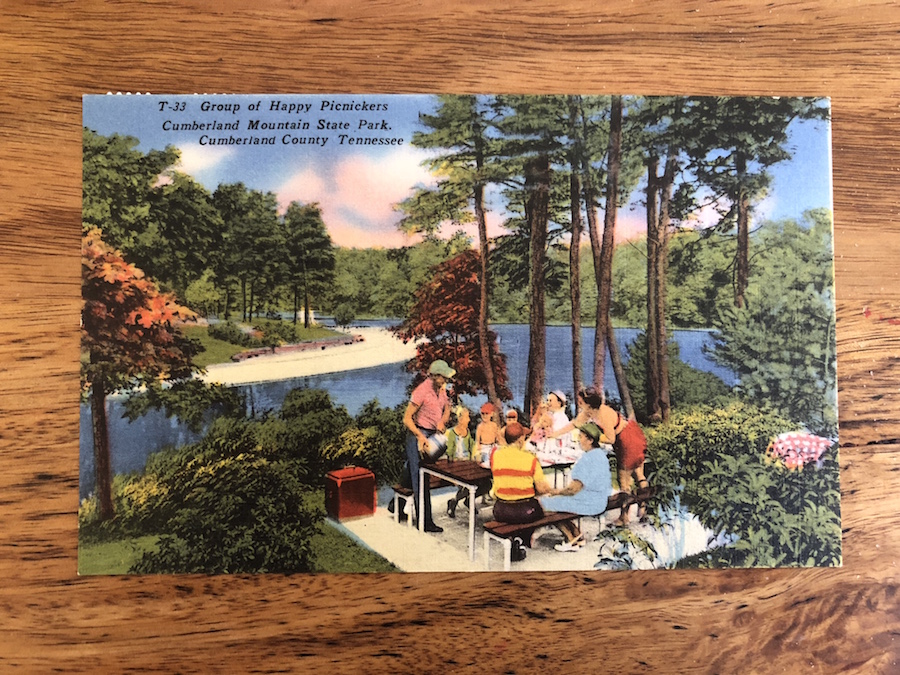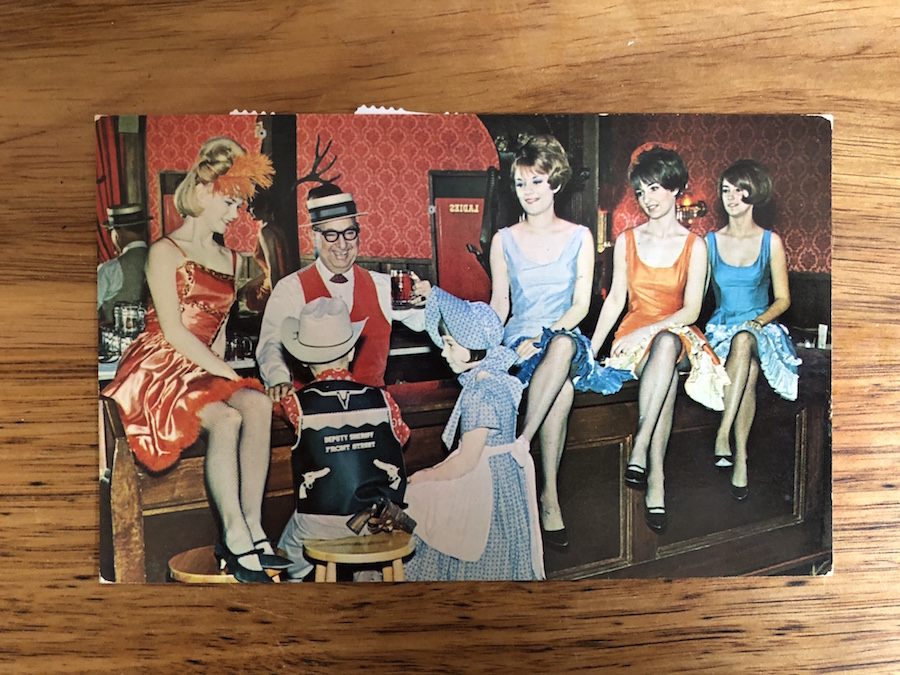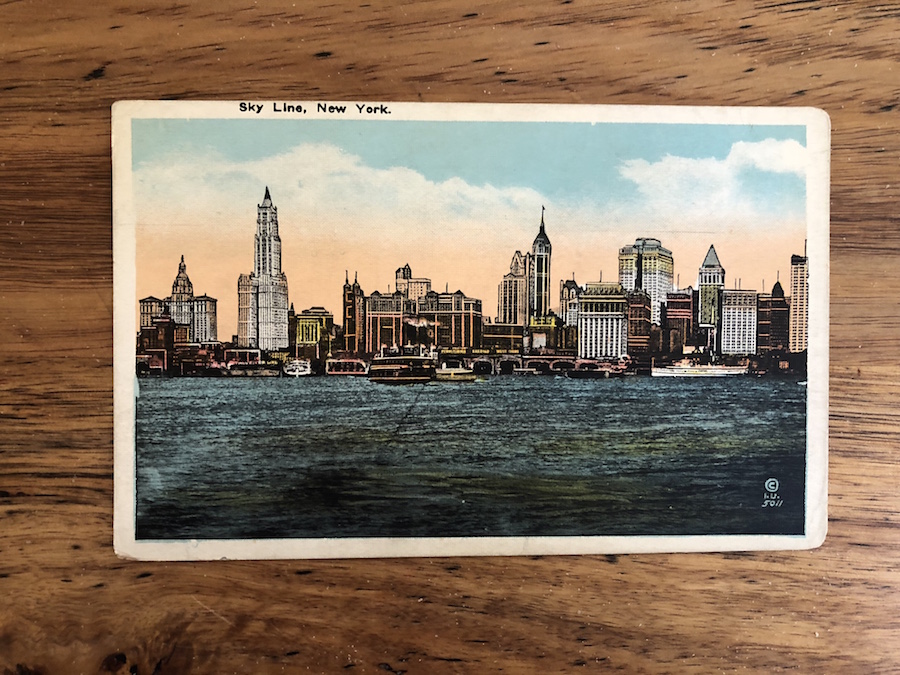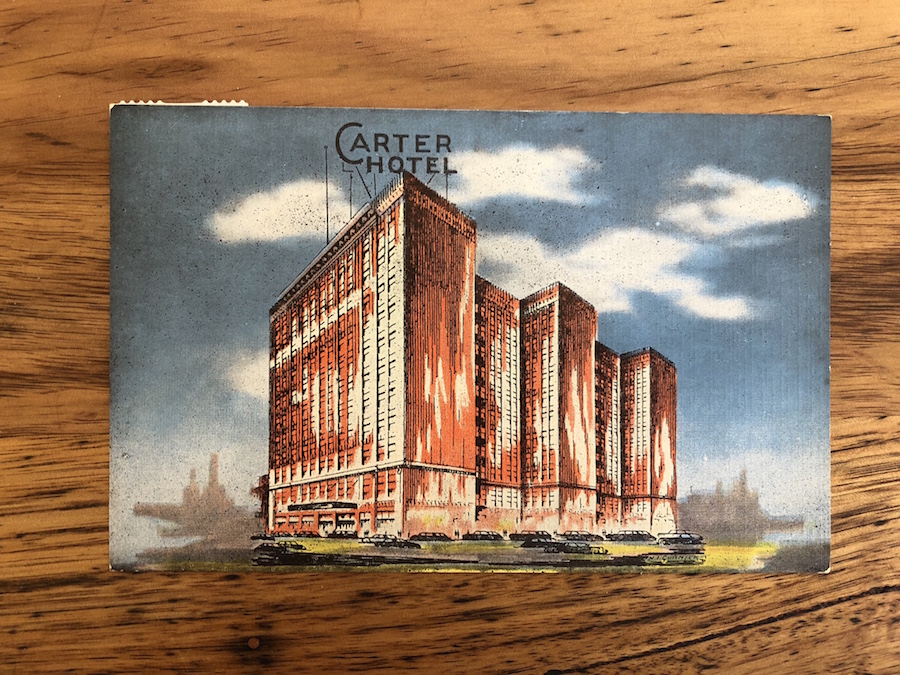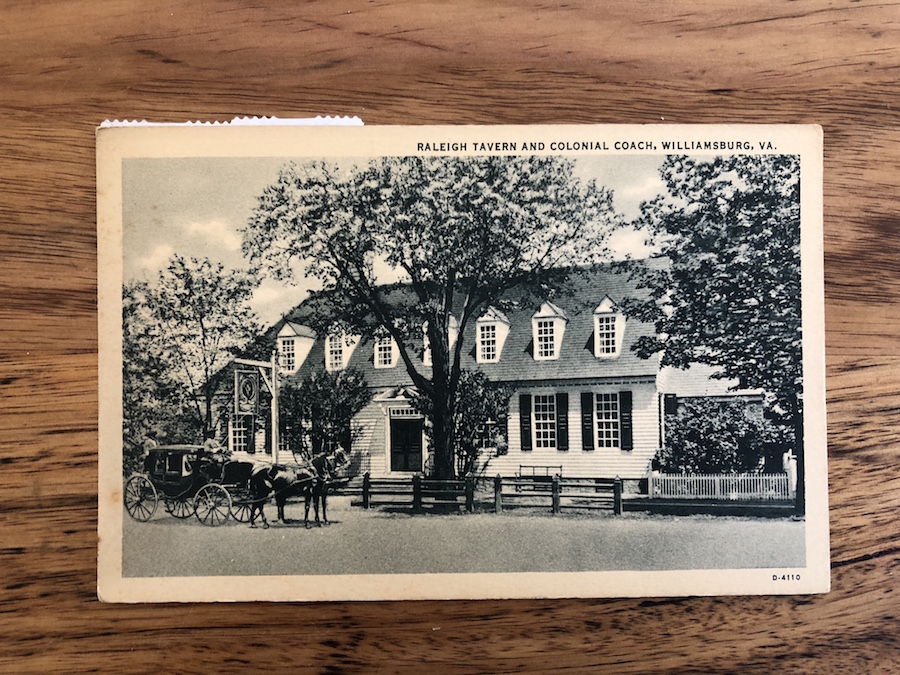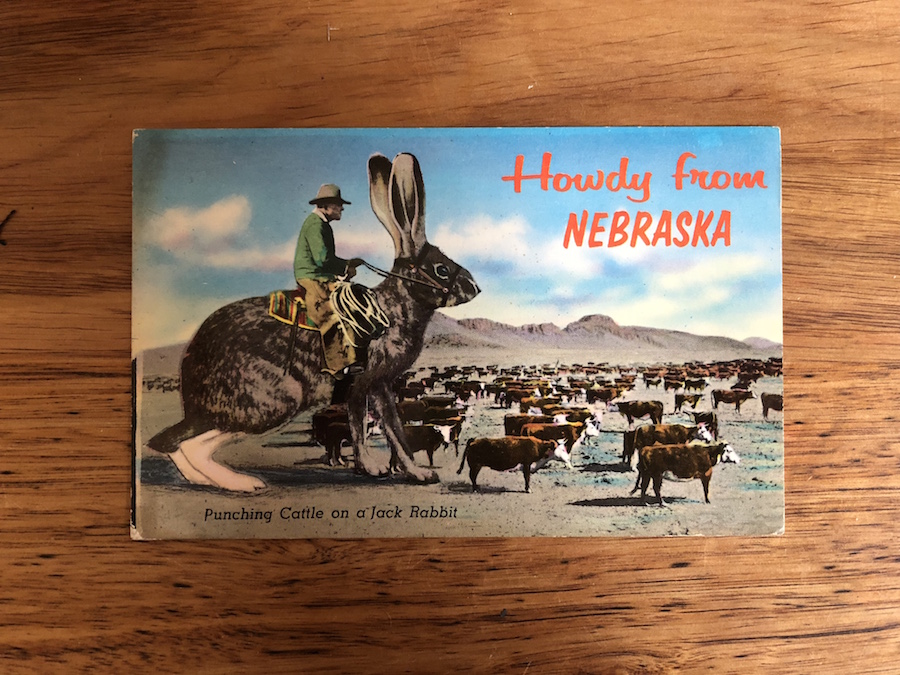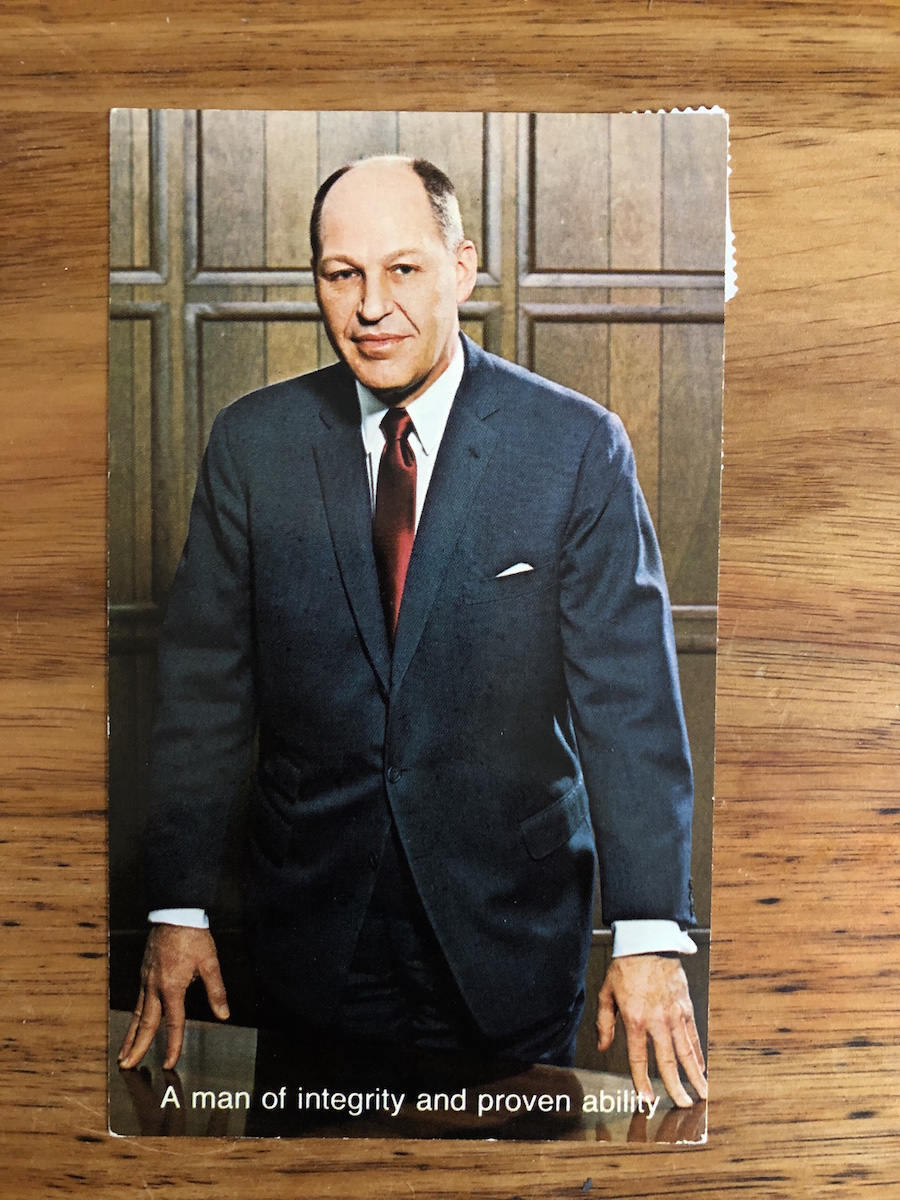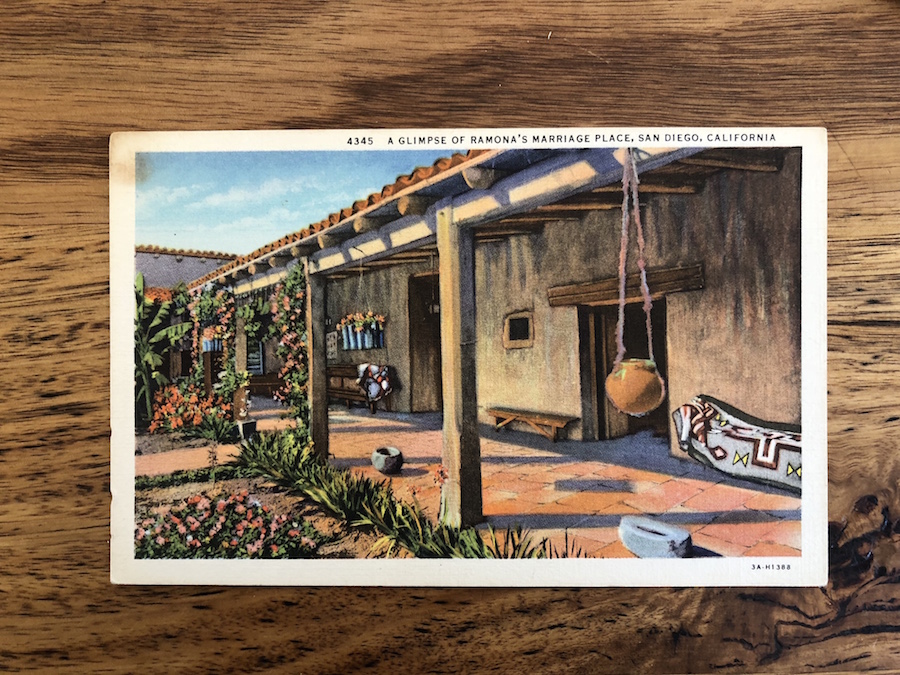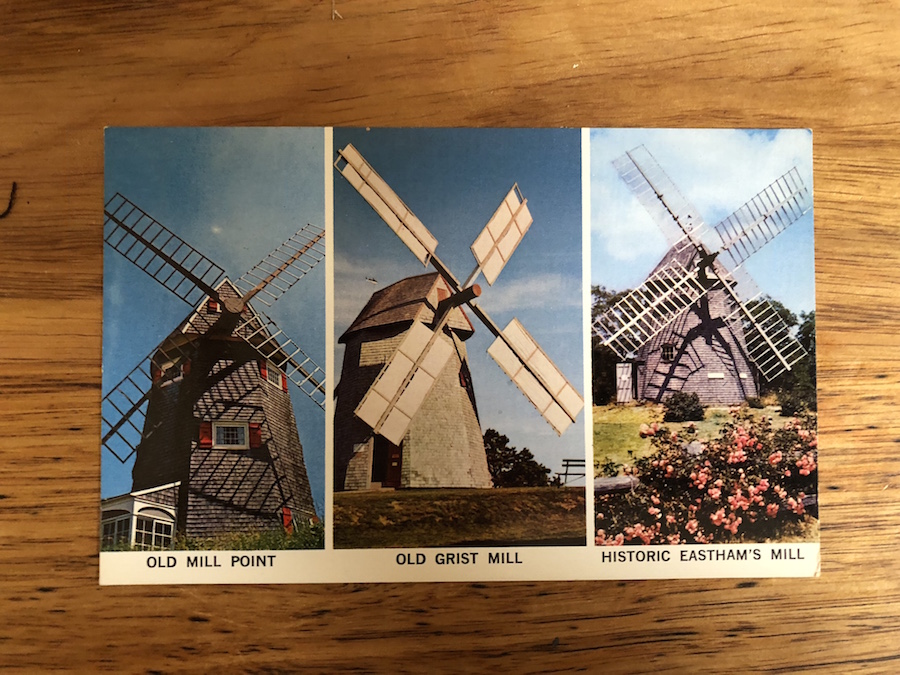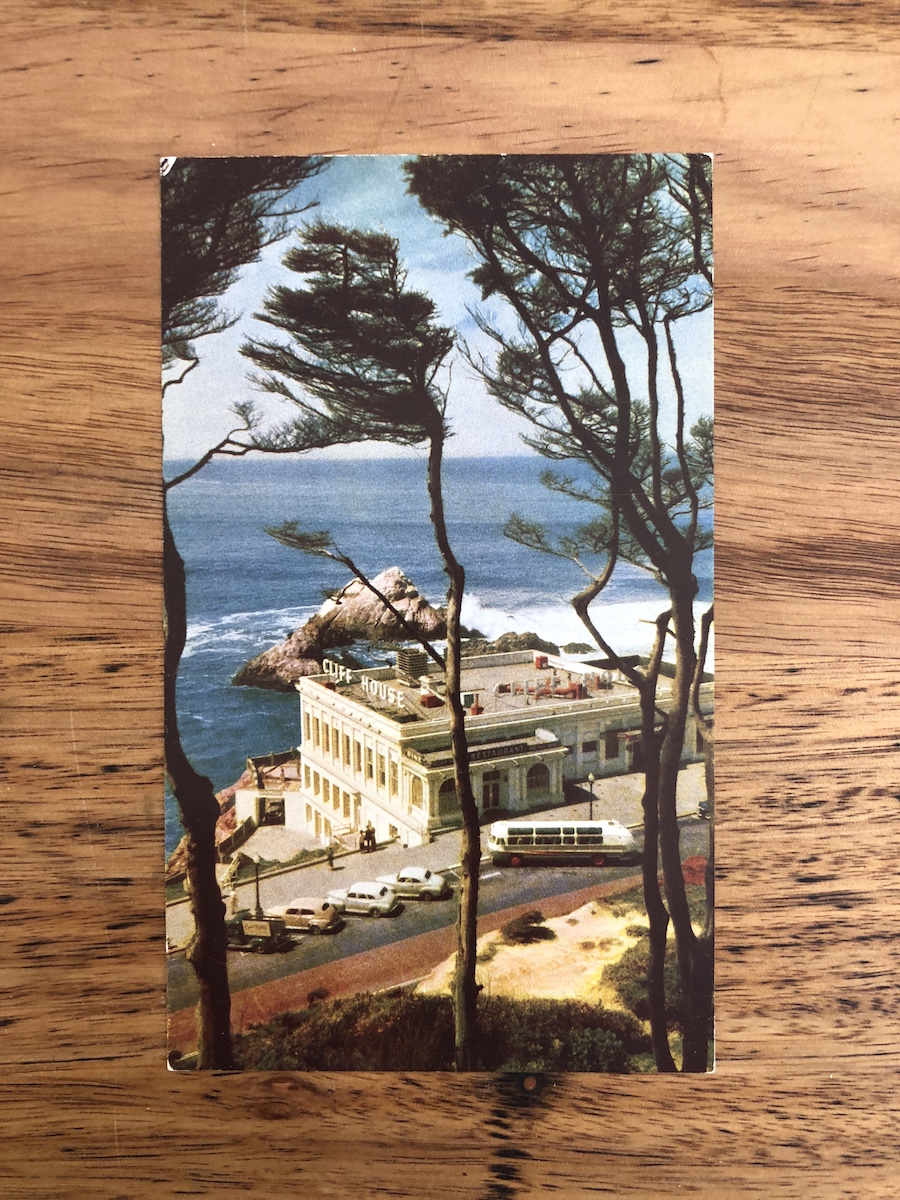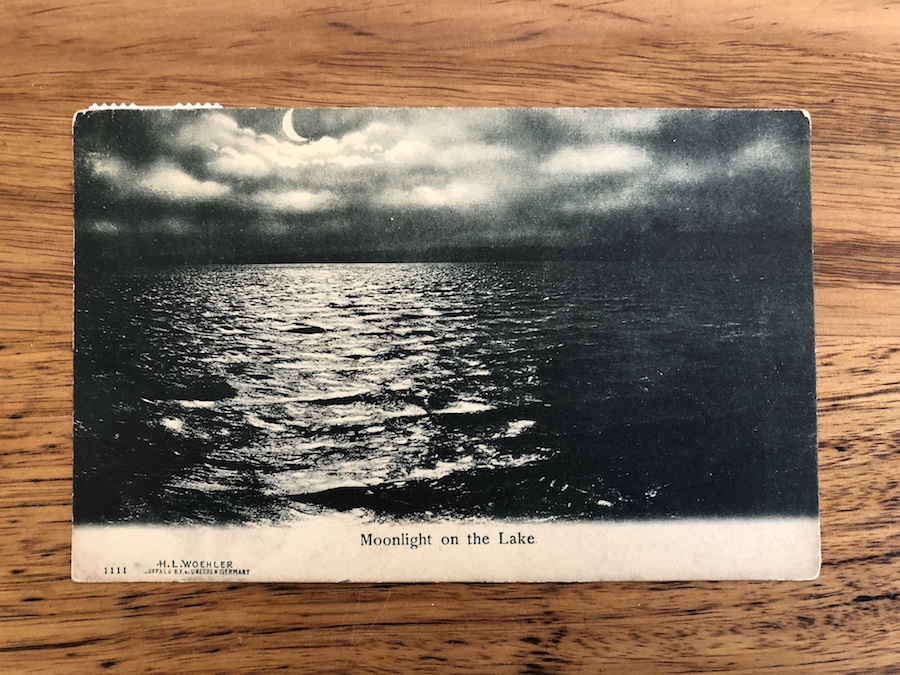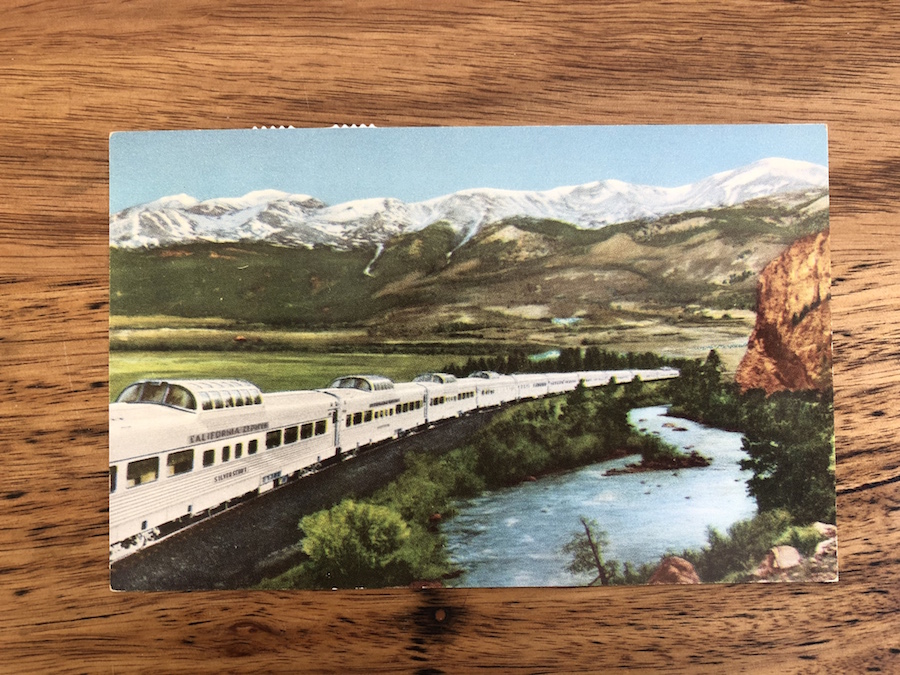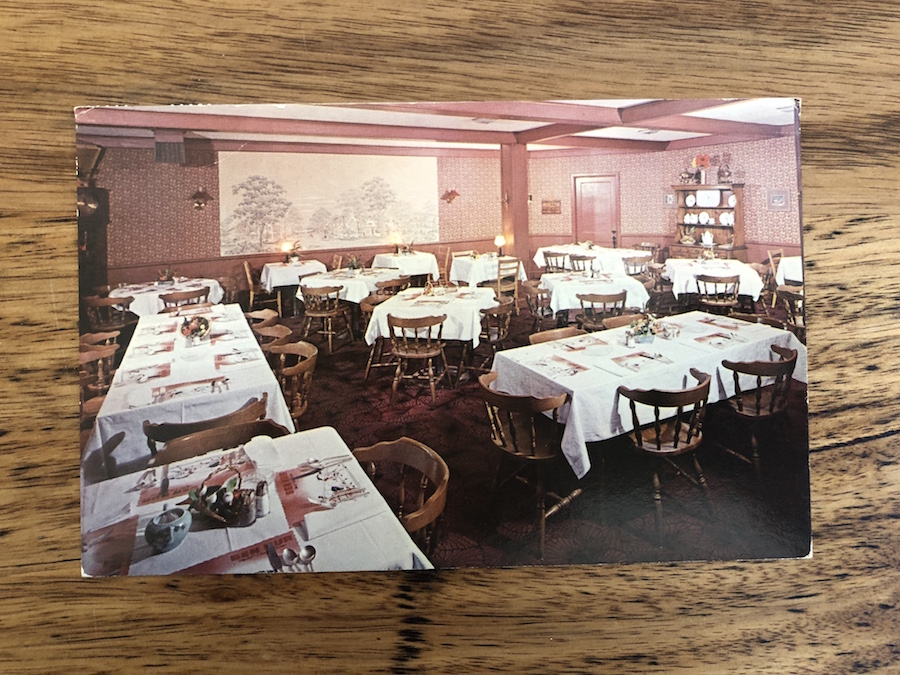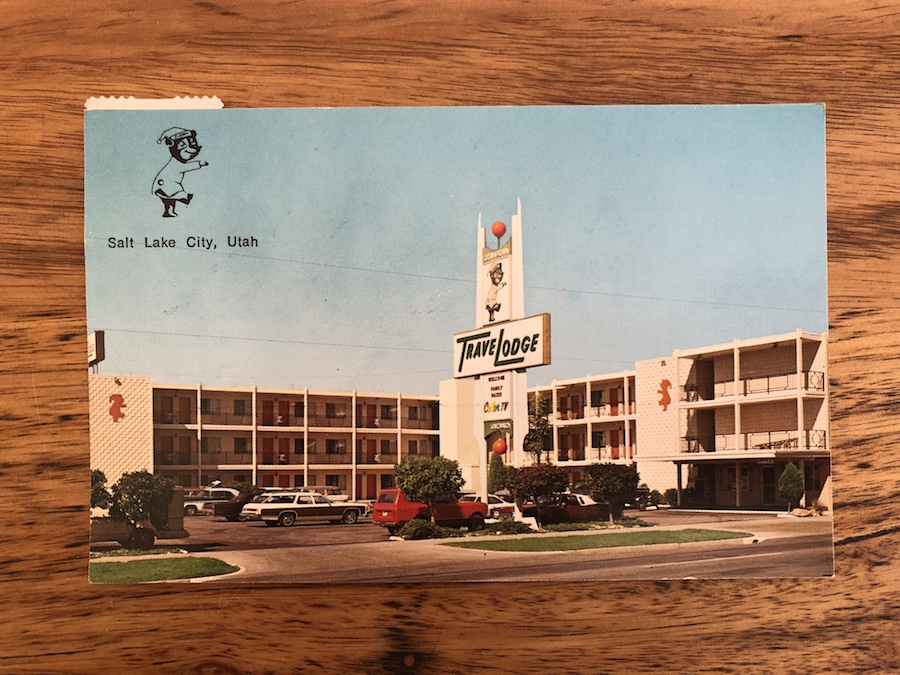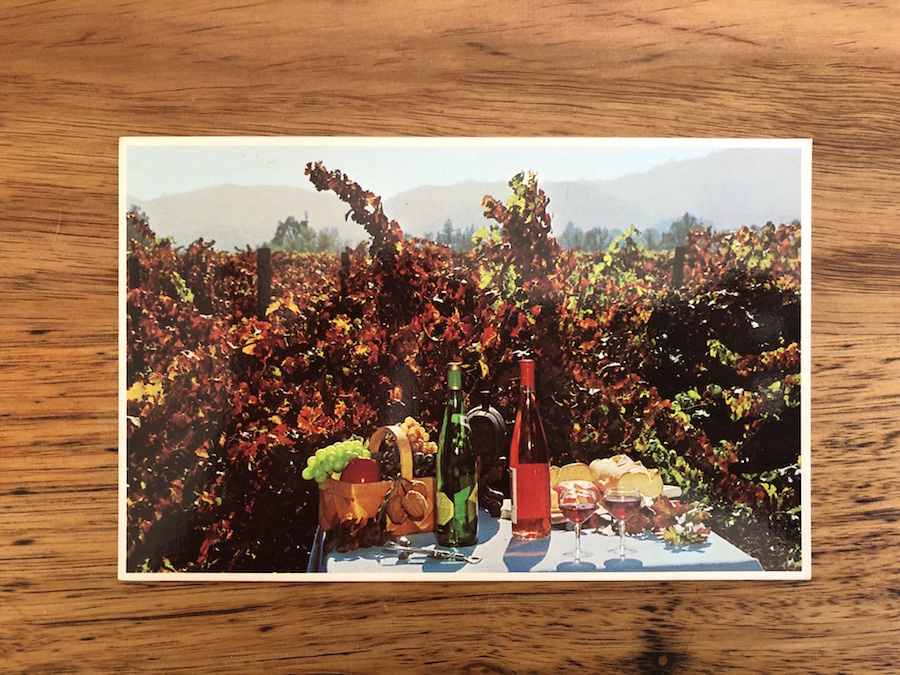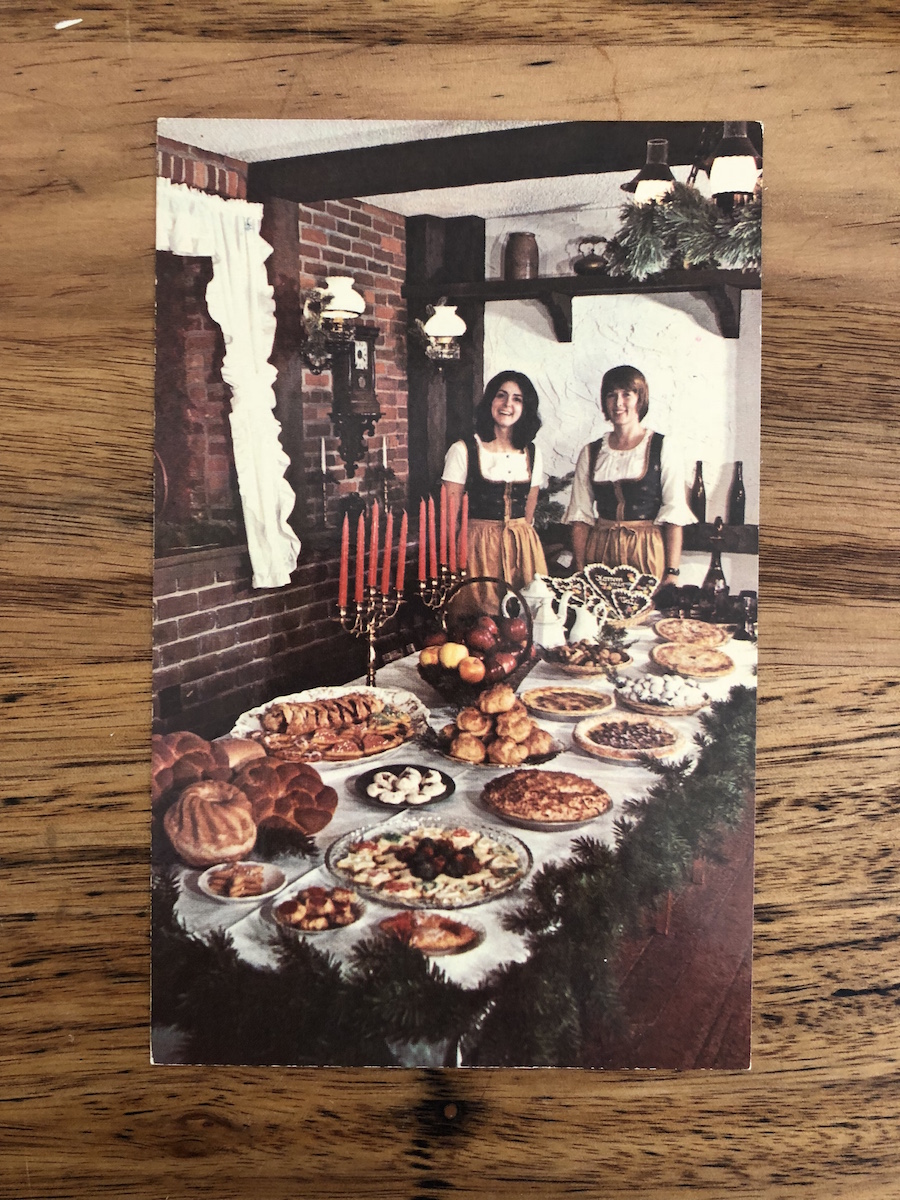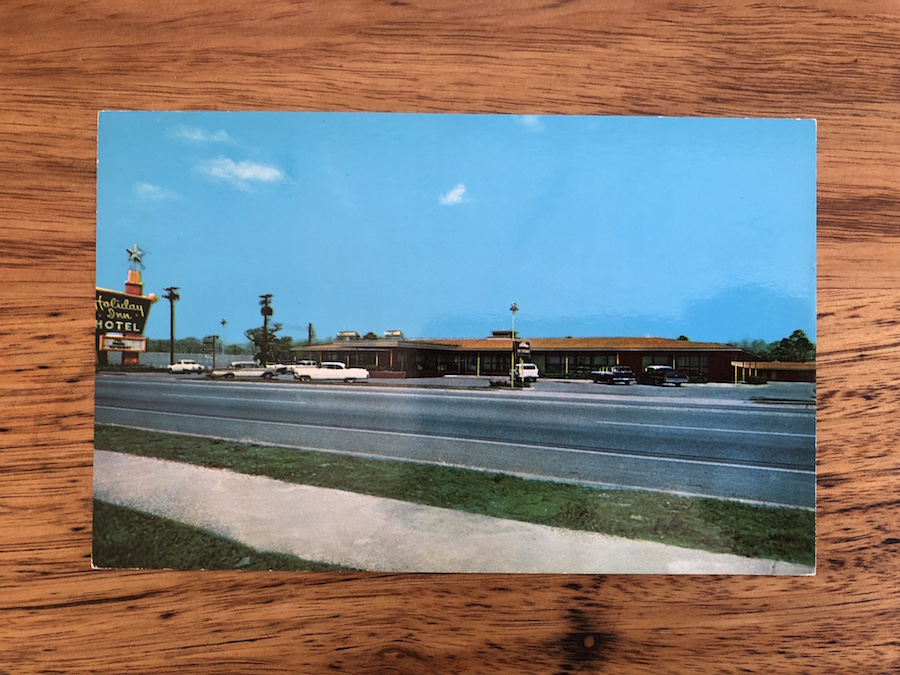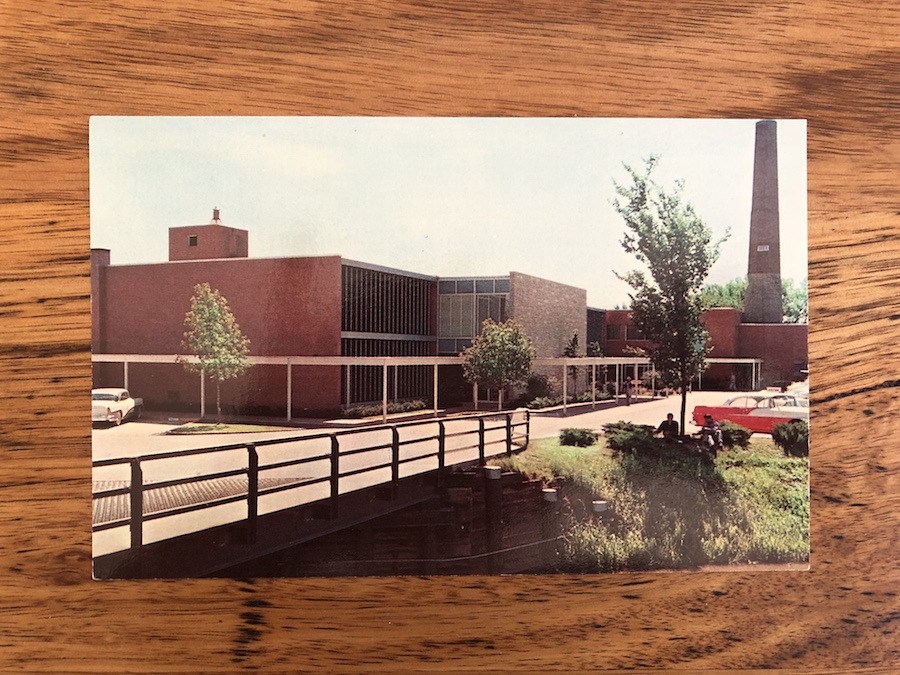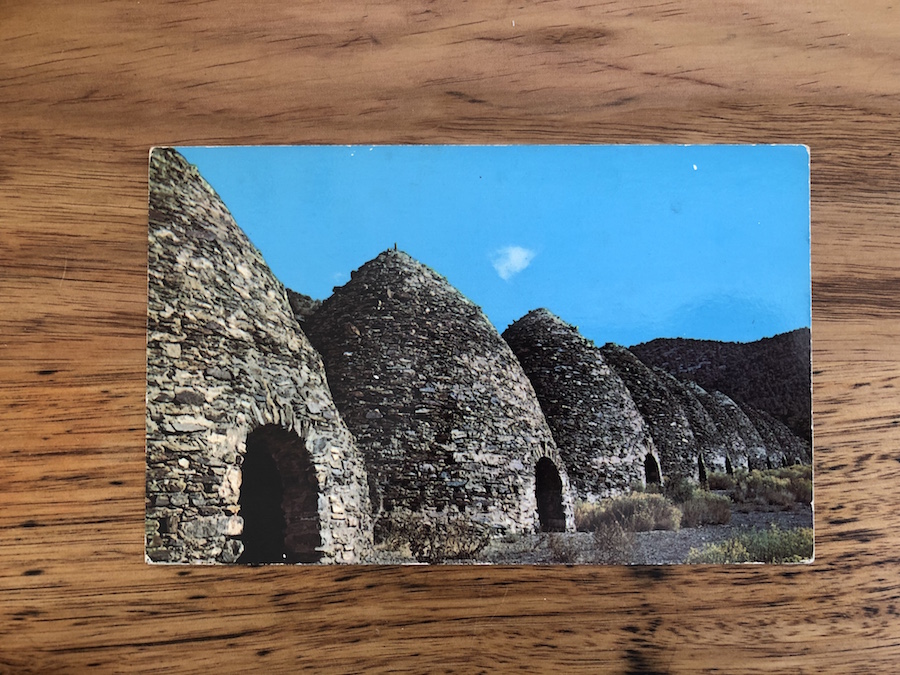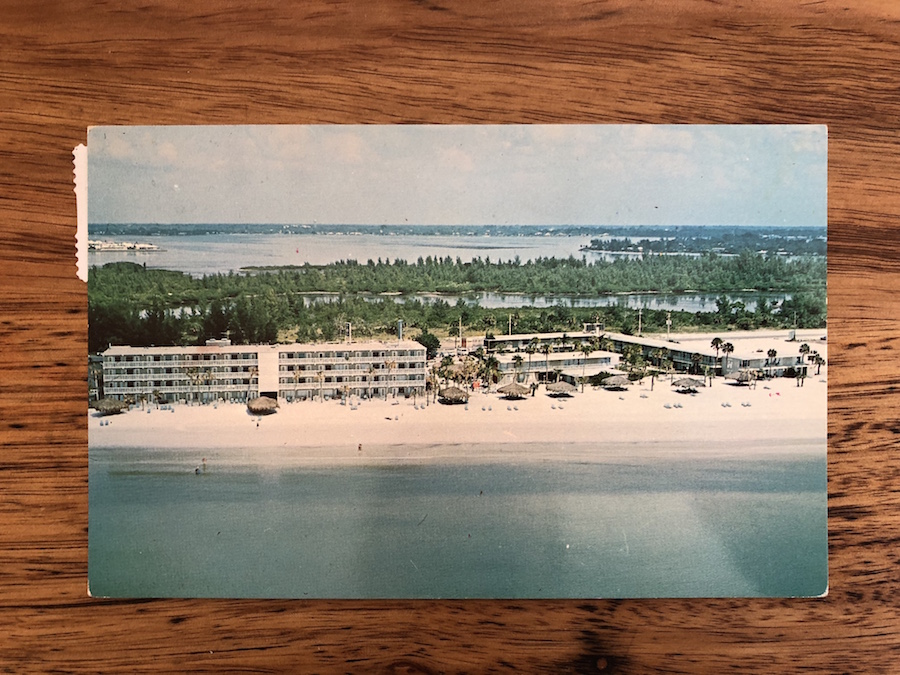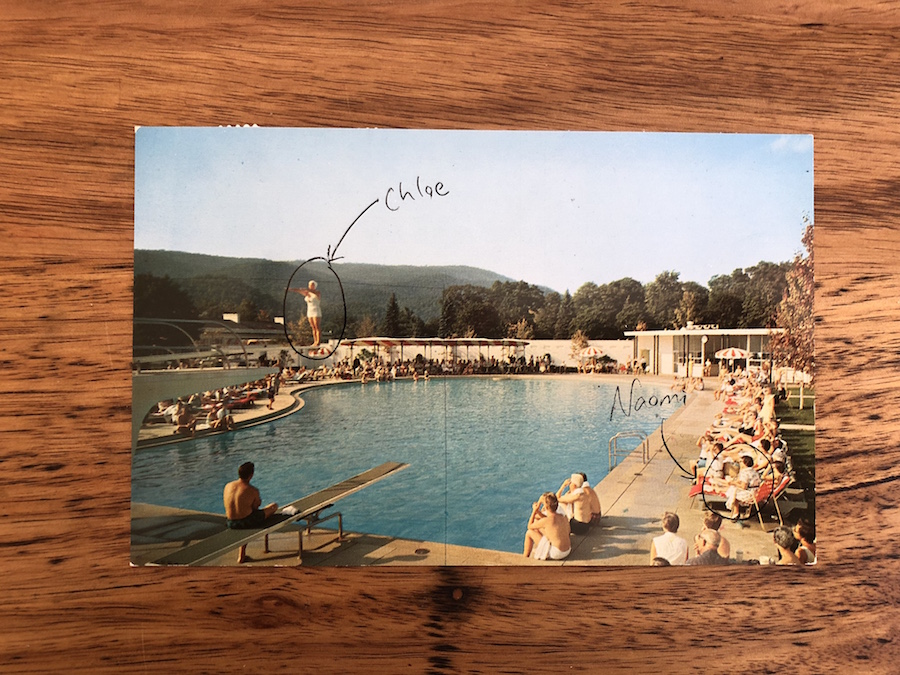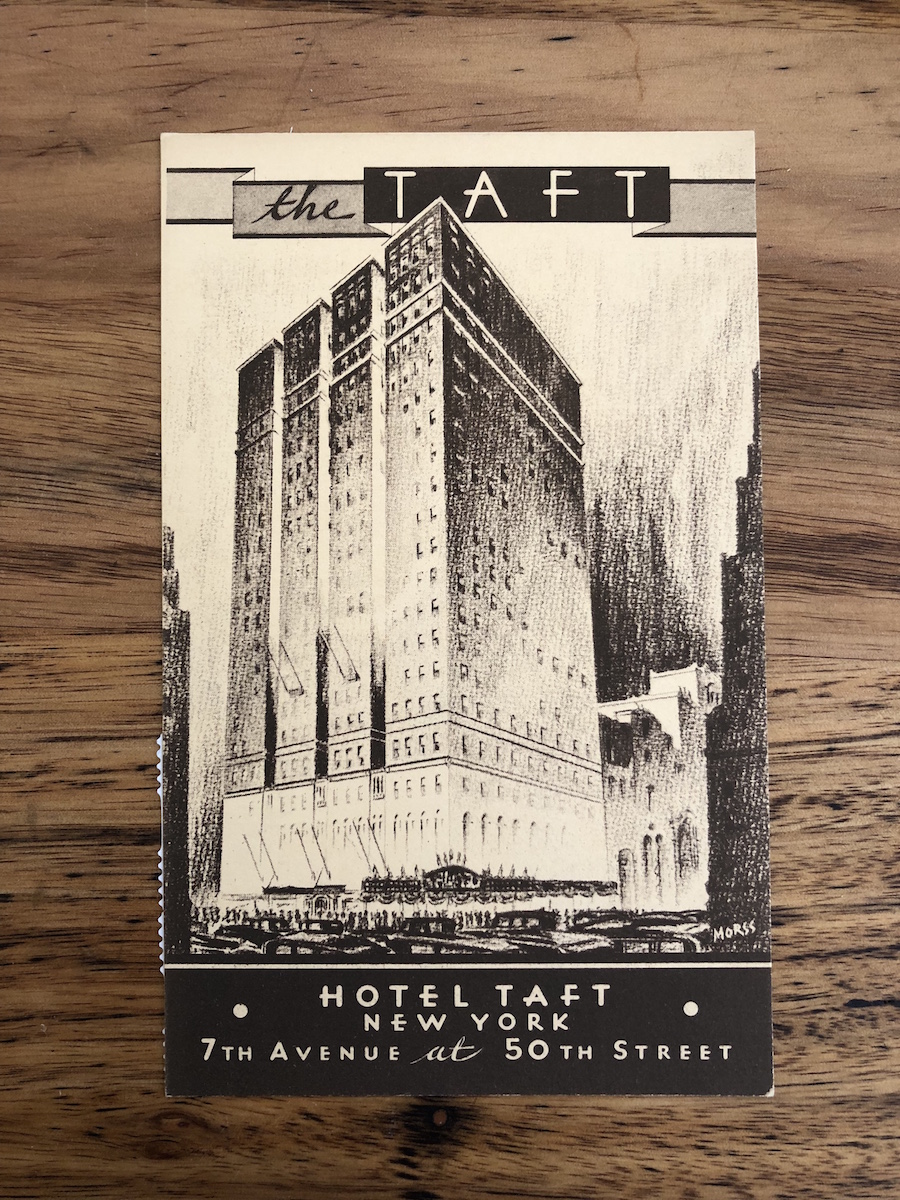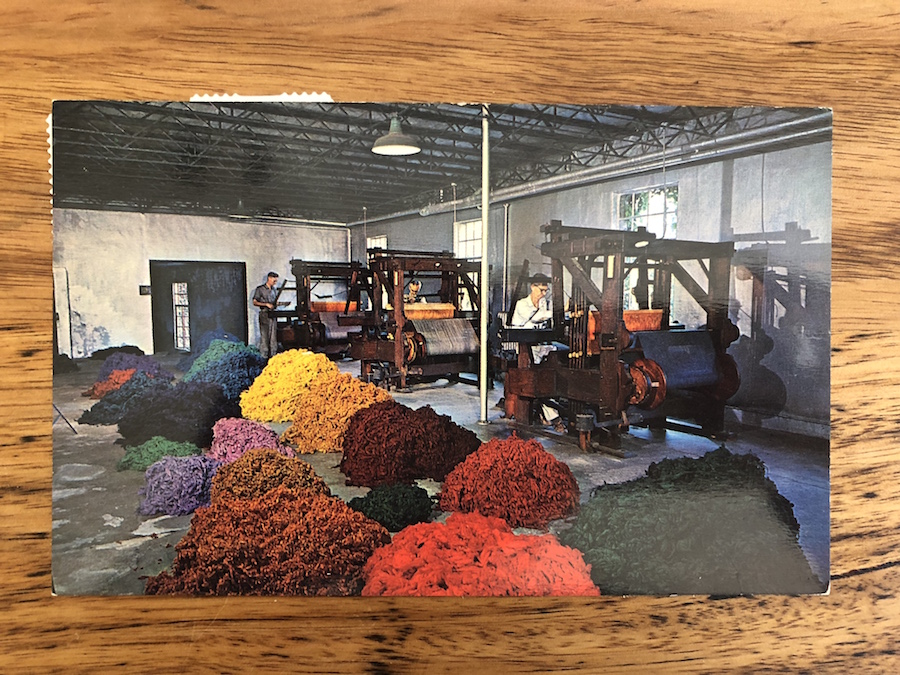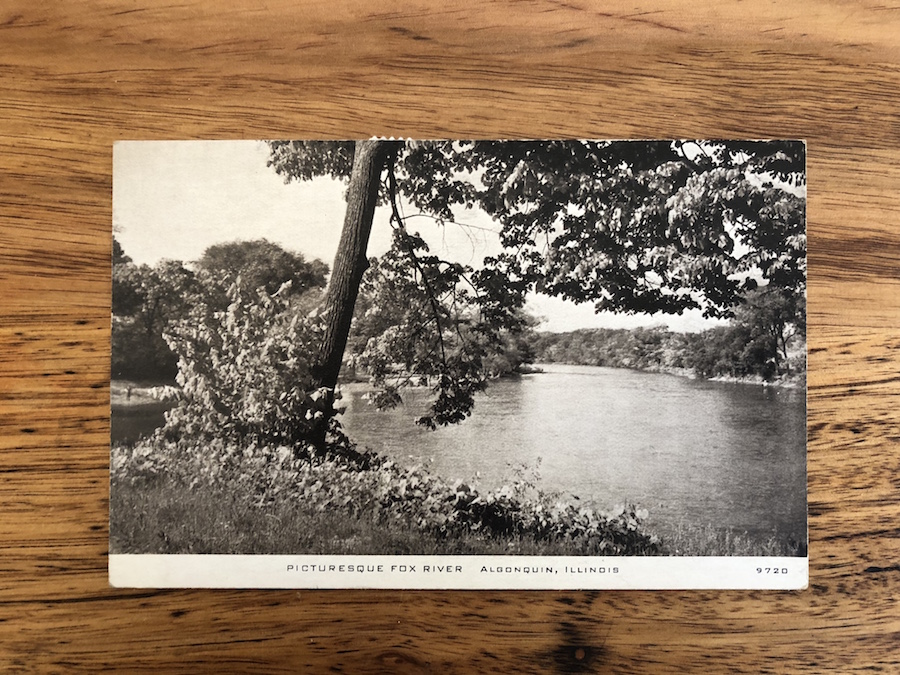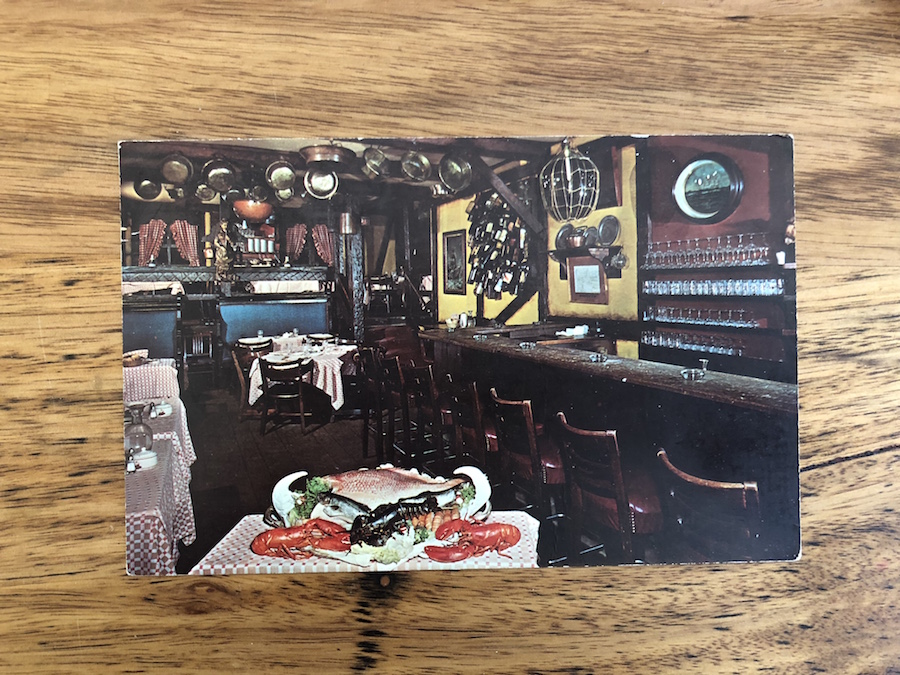
JOURNAL
documenting
&
discovering joyful things
"If you have an idea, you can learn how to make it" Nick Olson
Just a little story to share with you today, to remind you that if you yearn to make something, large or small, not to let the fear of failure hold you back. Just give it a try!
And also... "Never try to fit the sunset into just one little space." Lila Horwitz
Creativity, kindness, and the Internet
So, this is one of the most beautiful stories I have ever had the pleasure of sharing. A few weeks ago, I shared a photograph of this mail-art on my Instagram account: a painted journey (kind of a map for the postie) of the route my letter will take, from my home in Melbourne, out through the suburbs, past vineyards and the iconic Hanging Rock (remember?), all the way to Pippa's house in a country town at the edge of the Macedon Ranges.
A day later, I received a message from a beautiful German lady called Fine. She had used my mail-art as inspiration to write a short story about a different sort of journey, the slow unfolding of an old man from retirement and grief to openness and adventure. She wrote the story "just because," and sent it to me as a gift. With her permission, I have reproduced it for you here (I gave the story its title, but the rest of the words are Fine's own).
Fine's gift of this story left me slightly breathless. I am always telling people that writing a letter (as opposed to, say, an email or Facebook message) is extra special because you are giving someone the gift of your time. I feel the same way about this story, because she took the time to think about my painting, and through it brought an old man to life with her words.
The next time social media algorithms or online bullying or targeted advertisements on the Internet weigh you down, think about Fine, and this story, and how people all over the world are making the Internet work for them (not the other way around), using it to spread creativity and kindness as far as they can go.
GUS AND THE YELLOW BICYCLE
by Fine Winkel
The elderly white haired man with his old and rusty yellow bicycle (that squeaked with every step on the pedal) had long ago stopped dreaming. Had stopped caring, and had stopped doing anything wholeheartedly.
When he woke in the morning, he allowed himself to wince for just a second, glimpsing at the empty pillow next to his, where he used to see Erna’s red curls and her beautiful, warm smile first thing every morning. As the red had faded into white Erna had begun to fade away herself, somehow getting smaller and in the end with her, all the laughter, the friendly chatter, the music and the delicious smell of apple cake had disappeared. After she was gone, the house felt empty and cold, and the lines on his face were no longer from smiling but from cruel scribbles of grief.
His light-blue mailman uniform was still pressed and the remaining strains of his white hair were neatly tucked under his dark blue cap, but he avoided looking into the mirror over the bathroom sink other than to shave, because he could hear Erna’s frail voice making him give three promises on the last morning they had woken up next to each other… and he could practically see her disappointment reflected in his own eyes.
The promise to call their son every week, the promise to harvest the crunchy and juicy apples from the tree they had planted together when their son George was born (so he could make apple cake with Molly, their granddaughter, who had inherited her grannie’s red curls and twinkling green eyes), and the promise to go to the pound and adopt a deserted old dog who would trot alongside his bike on his daily delivery routes.
He had tried the first year, he really did. But he wasn’t good at putting his feelings into words, so he had stopped calling George after a few stilted conversations with increasing periods of silence. He couldn’t find Erna’s recipe book so the cake had been a disaster, and Molly seemed to be afraid of the haggard-faced old man who had instead served dry-as-dust cookies from the rear end of the kitchen cupboard, having forgotten to buy milk and ice-cream, so he had stopped inviting her. He had made his way down to the pound several times, but just couldn‘t bring himself to walk into the sterile, rectangular building that crouched at the bottom of the hill just outside the village, for fear that even the poor creatures inside would sense his grief and plainly refuse to come home with him.
So when old mailman Gus stepped into the red-brick Post Office for the last time, the day before his dreaded retirement, he didn’t expect in the least that his life would be going to be turned upside down in a heartbeat. He didn’t mind that there wasn’t any bon-voyage bunting over the door, or a cake in the break room, or even a card on his small desk to bid farewell to one of their own after 49 years of doing his duty and unfailingly delivering each and every letter to his destination. He had become solitary, and his sendoff would be a silent one.
Still, he would miss slipping into his uniform and feeling his life still had a small purpose in this world.
Gus began to re-sort the few letters addressed by hand that couldn’t be read by the machine that by now did all the sorting. To make out the flowing handwriting, Gus had to put on his glasses, which he knew would have made Erna giggle with delight at her husband’s vanity and tell him, “Honey, maybe it’s a good thing you’re as blind as a bat without your glasses and you refuse to wear them. Your eyes have a built-in Gaussian blur to hide all my imperfections.” He briskly shoved aside this sentimental thought and concentrated on the task ahead, just now noticing an envelope at the bottom of the pile.
During almost twelve hundred days of delivering mail, Gus had never seen a letter more beautiful, and was instantly reminded of the most exquisite illustrations in an old children’s book Erna had loved to read to little George and later to Molly. The kids had spent hours discovering small details and oohing and ahhing over tiny maps depicting the magical village surrounded by woods steeped in legend. It made him sad to see all this elaborate drawing on the letter, knowing it would never arrive at its destination behind the densely wooded mountains. His replacement Kevin, though much younger and stronger than Gus, wouldn’t care for the extra work and would just mark it return-to-sender or, even worse, put it into a folder and forget it ever existed.
Once again Gus could hear Erna’s voice, but this time it wasn’t frail or sad or disappointed: it was strong and energetic, and it reminded him of all the adventures that he, George and their dog Albert had planned while studying the cherished illustrated map. More than once they had packed their backpacks and taken their bikes to start on an adventure, coming home sweaty and with messy hair, but with enormous smiles on their faces, to breathlessly tell Erna everything they had seen, while eating cake fresh from the oven.
No, he wouldn’t let this envelope that had, as if by magic, replaced his wife’s sad mutter with joyous incentive, just sit in a folder gathering dust. He would – and he couldn’t quite grasp his own boldness – deliver the letter himself, and start on an adventure once more. Quickly he glanced around, making sure no one saw him slipping the envelope into his pocket.
He hadn’t felt this alive in years, as the warm fall afternoon turned into night, and he made his way home from the pound on his squeaky old bike with a new faithful companion by his side.
For now he would call George and ask him to come over for apple pie next week (the handwritten recipe book had been found lying in a box with Albert’s old bowl and collar, clever Erna). But first thing tomorrow, Gus and the chocolate Labrador, Hamilton, would embark on an adventure. And he couldn’t wait...
Mindfulness walking
Recently on our morning walks to school, Scout and I have started practising what we call 'mindfulness walking'. Essentially, it is paying attention to our senses while we walk, rather than allowing the path to roll away underneath our feet, unnoticed.
It starts when I ask a simple question: "What can you see?"
We get all the obvious things out of the way first: trees, cars, houses... but then slowly we start to really notice what is around us. A man carrying what looks like a very heavy stack of metal poles, on his shoulder. The way the wind makes the leaves on a gum tree in the middle of a roundabout sway like a dance. A cloud that looks like an elephant wearing roller-skates.
I ask, "What can you hear?" We walk a little further, hand in hand.
A drill from a nearby building site, passers-by talking to one another. A flock of birds that swoops past, screeching. We continue walking. "I can sort of hear the wind pushing past my ears," Scout says. I say, "I can just hear our footsteps." We start to notice other things: the hum of an air conditioner on a building, a helicopter in the distance, the clanking of unseen dishes inside someone's house, the soft whoosh of bicycle tyres as they pass us by.
I ask, "What can you smell?"
We smell car exhaust and the tinder tang of fired metal on the building site. Fresh coffee. A garbage bin. We stop and crush leaves between our fingers. "Lemon!" cries Scout. And then of another, "Um, kind of herby?"
Mostly we are at school by now but if there is time, I ask, "What can you feel?" The way the ground under our feet changes from smooth footpath to uneven cobblestones to sand to spongy grass. The warm sun on our faces. The cool breeze making goosebumps rise on our arms. The fabric of our clothes: is it soft? Or scratchy? A pebble in my shoe. School bag straps chafing shoulders.
Of course this is more than a pleasantly curious way to pass the time. What Scout and I are practising on these walks is mindfulness in its most basic and simple of forms. We are simply paying attention, without passing judgement. And there is something rather special to be said about paying attention, being present in the moment, and indulging in some good, old-fashioned curiosity.
There are loads of benefits to practising mindfulness and I'm sure you've heard them before. Things like reduced stress, improved memory, better focus, and less emotional reactivity. But what these walks are also doing is giving our brains some exercise in the area that houses the 'salience network,' a network of brain circuitry that helps us decide what to pay attention to, and what to ignore. This process is called 'latent inhibition' and it just so happens to have a big impact on creativity, an area in which I work and teach.
Latent inhibition is our subconscious deciding what, from the cacophony of sensory stimuli that we are exposed to in any given second, to take in, and what to ignore. Imagine if our brains gave equal weight to everything we saw, heard, smelled, touched and tasted, at the same time, all the time. The world would be almost unbearably loud and bright, something I imagine akin to standing in the middle of the traffic in the middle of New York Times Square during rush-hour (and possibly just as deadly). I've heard that some research studies have linked a reduction in latent inhibition to psychosis, and that doesn't surprise me one bit.
On the other hand, a conscious, deliberate, mindful reducing of our latent inhibitions, during something like a mindfulness walk, can be powerfully beneficial. A research study of individuals with high IQ scores found that those who were also classified as "eminent creative achievers" were seven times more likely to have low, rather than high, latent inhibition scores. As the researchers put it, people who were less likely to classify sounds or objects as irrelevant were at an advantage when it came to producing creative, original content.
So by the simple act of paying attention during a walk, Scout and I are exercising our brains, and giving them permission to notice and give relevance to our surroundings. This in turn leads to more creative thinking in all areas of life, from artistic expression to problem-solving and innovation.
(Side note: speaking of paying attention, here is something I have noticed in the picture above. Because of the time of day, the shadows were right in front of this gardener and you can hardly see them. Look at her feet. Does something seem wrong? No shadows! It kind of looks like I have photoshopped her in from some other picture, and failed to add in grounding shadows. I didn't, this shot is unedited, but it is driving me crazy. For people who ask me about painting tips, this is why shadows - even soft ones - can make a big difference to a scene.)
After my mindfulness walk with Scout this morning, I decided I would write about it, so I kept my iPhone out to take some pictures of things I noticed, too, during my solitary walk to pick up the mail and get my morning coffee. At one point, I leant across a fence to photograph some beautiful, peeling paint on a brick wall (something I had walked past more than 100 times before and never properly noticed) and, as I leaned, I accidentally crushed some rosemary. The honeyed, herbaceous fragrance instantly lifted my spirits, so I picked a sprig and carried it with me the rest of the way.
What to do on a mindfulness walk
The next time you take a solitary walk - or a walk with the children if they are willing - take at least some of that time to try a deliberate mindfulness practise. Here are some ideas to get you started:
1. Bring a piece of paper and pen with you, and start recording things. List 10 things you can see, 10 things you can hear, 10 things you can smell, and 10 things you can feel. There probably won't be 10 things you want to taste, but don't let me hold you back if that's your thing! I have made a pretty worksheet for this exercise that you can download here if you'd like it.
2. Take a camera and go for a walk to see what you can see. I have been recommending this as a tool for overcoming creative block for years. There is something about the combination of exercise, a change of scenery, and exercising creativity in a different kind of way that can often be just the break your brain needs to unblock whatever was stopping you in your project. Walking with a camera can also be a beautiful way to practise mindfulness, because you are more likely to notice things. Really pay attention, and make the effort to capture what you see. Think about light and shadows and details. Crouch down to get a different perspective. Zoom in closer for some detail. Look for unexpected shapes in building angles and white space.
3. Make a mini-movie by recording one-second videos every minute or so on your walk. Then when you get home, edit them together. You will be amazed, once you start recording, the sounds and sights you hadn't noticed until that moment. Possibly when you watch your edited movie back, you will also realise there were other things going on at the time (a woman pushing a pram on the other side of the road while you were filming a letter-box; a bus starting up from around the corner while you were filming a bird singing) and that will help you be even more mindful the next time you go walking.
4. Just before you go for your walk, use your phone (or any other device) to make an audio recording of your walk. You don't need to do anything with this recording - you can even delete it as soon as you're done - but the very fact that you are recording will heighten your awareness of the sounds around you, and help you to pay attention. The bang of the front door as you pull it shut (even the click of the lock), a magpie warbling, the squeal of car tyres somewhere in the distance, bees on a bush, a baby crying, snippets of conversations.
I would love to know if you find these ideas helpful, or if there is anything similar that you do in your own life, that others could benefit from knowing. What do you think?
Tea at dawn
This is when I do my best work. In the pre-dawn, while most of the world sleeps.
I'm not a masochist, nor a particularly motivated person. It's just that I'm a morning person so I wake early naturally, and of course it makes sense to get as much work done as I can while the children sleep. My brain is rested, and rejuvenated, and I can do my best work at this time. I wrote my book The Art of Mail almost entirely between the hours of five and six in the morning. I write most of my blog posts at five, and that's when I research and craft most of my courses.
Last month I put out a survey in my newsletter, asking people to share with me the biggest challenges they faced when it came to being creative. I gave them a list of choices, based on previous conversations I'd had. Hurdles they faced, like needing accountability, lack of confidence, and too many distractions. I received hundreds of responses to this survey, and the number one reason - in fact more than 80 percent of people ticked this box - was this:
"I want to be more creative but I don't have enough time."
A lot of them felt super frustrated with the popular 'wisdom' that is often spouted about finding time: "If you want it badly enough, you'll make the time." They felt disempowered by this statement and, personally, I think it is cruel. It's one thing expecting people to take responsibility for their own lives - which we all should! - but it is way too simplistic to say "You don't want it badly enough" to someone who struggles to make time for the things that give them joy.
I have a job, and that takes time. I am trying to build a business, and that takes even more time. I have a husband and two small children. They take a LOT of time. My husband works 80+ hours a week so I essentially run our house on its own. That takes a good whack of time too. I don't have a car, so even getting from A to B if I need to do something like buy milk takes more time out of my day than it otherwise might. This list could go on, as I'm sure yours could too.
And it's not as though I could drop any of those other responsibilities, even if I wanted to (I generally don't want to). I need to work because my family relies on my income. I need to look after my children because my husband is at work and, while they have school and childcare on some days, they also need their parents! I need to cook and clean and otherwise run the house because if I didn't, we'd be living in a pile of rubbish comprised of dirty clothes, lego pieces, dust bunnies and food scraps, while eating takeout for every meal.
But where in my busy life - or in yours - is the room for creating? For making just for the sake of making? For learning something new? For playing with art? For self-improvement?
Right now I'm working on a short course made specifically for all those lovely people who responded to my survey, about how to find (or make) time to be creative. It is about guilt-free ways we can use more of our time for the things that spark joy, and train our brains to be more creative, without feeling as though we need to drop our responsibilities or small pleasures.
That will come very soon (if you happen to be awake at 5am Melbourne time on most days, you'll be able to picture me sitting at my desk with a hot cup of tea, writing it). In the meantime, today I thought I'd share something else that several people in the survey asked for: an idea of what a typical day looks like for me. How do I divide up my time, they wanted to know, to fit in all those things.
The short answer is, of course, that I generally fail in one area or another. I'm not super-human and I regularly feel as though I'm playing catch-up, or having to reshuffle priorities. Also, my day - just like yours - is never typical. So, bearing that in mind, here is a rough idea of what my days look like on one of the three days a week that my children are in childcare.
The day always starts with tea
5am: I make a cup of tea and take it into my office (a tiny, windowless room that is actually a converted wine cellar. It is always more cluttered and messier than I'd like it to be). I work on a key writing project, such as course material, book copy, blog posts. At some point during this time my husband usually gets up, showers, and leaves for work.
6.30am: The children get up. I close the computer, we have cuddles, then get breakfast ready. We put on music (the children call it "calm music" and generally it's classical music at this time of morning), and we sit at the table together to eat. I try not to rush this and I try not to have my phone in my hand. We talk about the day ahead. What's on at school or kinder, any reading they've been doing, events that happened the day before (often they are too tired and their heads are too busy to talk in the afternoon, but it all comes out over breakfast). In Scout's case, there are often elaborate discussions about what she will wear for that day.
7am: While the children are still eating and chatting, I make their lunches and pack their lunch boxes, then check they have everything they need packed in their bags (hats, sunscreen, lunches, bottles of water, tissues, readers, library books, signed permission slips, and a change of clothes in case of over-enthusiastic water-play). At this point I often also realise I have forgotten to let the cat out, so I open up the little outdoor room where she sleeps.
Honestly, mornings are mostly lovely. Last year they were hectic, but now we are in a rhythm, and most mornings we have fun. Sometimes we change up the "calm music" for something more lively, and take a moment to dance together around the kitchen.
(At some time after breakfast, I aim to post an Instagram picture. I choose this time because I find that for me, a lot of my tribe are also online at that time, so we can chat and be engaged. I don't post unless I am relatively confident that I can respond to comments, and comment on other people's posts, during the next half hour. That's why if you follow me on Instagram you'll notice that I've been quiet lately. I don't feel it's fair to post a picture and then walk away, so I haven't been posting all that frequently of late, since mornings have been quite busy).
7.30: The children play or read books while I go upstairs and make the beds, shower and dress, pick out clothes for them to wear, and water the upstairs plants if they need them (it's hot here right now and upstairs is like an oven, so they need watering almost daily).
8am: I get the children dressed, brush their teeth and my teeth, do Scout's hair, and hunt for their shoes (generally at least one of them has lost at least one shoe). We need to be out of the house by 8.20am on two of the three days. On Tuesdays, all of the above still has to happen, but we need to be out of the house by 7.30am at the absolute latest, so imagine everything occurring at double speed.
8.30am: Drop Ralph at kinder, settle him in, then walk Scout to school.
9am: Say goodbye to Scout at school, then walk home, picking up a coffee on the way to bring home, and sometimes checking the PO Box for mail.
9.30am: Finally I sit back down in front of my computer in the little windowless office. There are four core activities I do in my business. I always try to maintain a balance of these four in my week (preferably even in my day) because if I spend too much time on any one of these, or neglect any one of these, my business suffers.
1. COMMUNITY: That means responding to comments and emails from my students; responding to questions on Instagram; replying to other emails; and caring for the Me & Orla community (I am a TA/VA for Sara Tasker) by responding to comments and questions from her students. This is also when I'll work on questions, strategies and responses for the people I mentor on a one-to-one basis.
2. PRODUCTS: To make money in my business, I actually need to be constantly making things that I can sell. Writing courses, writing books, making colouring books, establishing master-mind groups, painting stationery designs for Boots Paper (I am the in-house illustrator for Boots), writing paid magazine articles, painting privately-commissioned pieces.
3. PROMOTION: By this I mean all the things I do to share my work and my business with my tribe. This blog, updates to my website, my newsletter, Instagram, unpaid magazine articles, magazine and podcast interviews, pitching story ideas to magazines, and guest blog posts. A lot of people have asked me to create video tutorials and this is definitely something I'd love to start doing, but (as you can see) I have a lot to fit into three half-days already, so we'll see!
4. RESEARCH & LEARNING: My business is less than five months old, and I started it without planning or strategy (I wrote about that here), so I have a LOT to learn. I listen to podcasts a lot because I can do that while I'm painting. I research and read material online, I read books, and recent courses I've done include two on Instagram with Sara Tasker, one on Pinterest with Melyssa Griffin, some smaller courses on selling without being sleazy with Jessica Lorimer, and I've joined the Soulful PR community with Janet Murray. I also booked a one-hour coaching call with Jen Carrington that helped give me a lot of clarity.
Depending on what is going on on that particular day, I prioritise COMMUNITY first, because I don't want people to wait too long to hear from me. Then the balance of PRODUCTS or PROMOTION will depend on what I have going on. For example right now I'm working on that "Time to Create" course I told you about, so I might prioritise that a little more heavily. When I'm ready to release it, or my book comes out, I'll move more into PROMOTION mode.
But to maintain some balance, I try to spread things out. I spent an hour on emails and comments this morning, now I'm writing this blog post. Afterwards, I'll dig back into writing the course. Last week, I spent the bulk of my time painting the artwork for the cover of my book, and the week before that I was editing the copy. Because of all those things, I've fallen behind on the promo side - this blog has been woefully neglected, as has Instagram. So I'll be working on redressing that balance soon.
I like to do my painting and drawing work in the afternoon. My brain is getting tired (remember I've been up since 5am!), so after lunch I'll sit down to paint, while listening to podcasts or audio books, so I can combine my PRODUCTS tasks with my RESEARCH & LEARNING tasks.
3.15pm: I leave home to pick up Scout from school, then we walk back together, just in time to pick up Ralph from kinder.
4.15pm: We all arrive home and the children have some afternoon tea. We sit at the table again, and pull out any homework that Scout might have (she is only five so it's just readers, and school is so new - we started at the beginning of Feb - that she still enjoys them).
While the children play, I clean up a bit. Clean the kitchen from meals cooked during the day (my grown-up step-daughter Em is living with us right now so there are several meals going on), empty and wash up lunch boxes, pick up clothes and toys that got scattered about that morning but which I didn't prioritise because I wanted to get straight to work, put on a load of washing, vacuum. Those kinds of things.
5pm: The children have either a bath or a shower. If they shower, I sit in my windowless office which is right next door, and answer any 'community' questions that have popped up since that morning. If they have a bath, upstairs, I use the time to respond to any comments or questions on Instagram while supervising them as they play. Or I fold the laundry.
5.30pm-6pm: Sometime around this point, the children have dinner. It's only light: normally salad with some kind of protein like tuna or ham or egg or cheese, followed by fruit. On school days they are never particularly hungry but are always exhausted so they just want to go to bed. Then we brush teeth, and go upstairs to read stories.
6.30pm-7pm: The children are in bed. I come back downstairs and clean the kitchen again after the children's dinner. Normally this is when I'd start to cook dinner for the grown-ups.
Lately though, we've been trying something different. I was finding I'd start cooking this late, so the food wouldn't be ready until 8pm, and often Mr B would then be in meetings or functions and so he wouldn't want to eat at all, and the food would be wasted (plus I'd be exhausted and then have to do even more washing up). Instead, we've started ordering "clean foods" meals from YouFoodz. I can see myself getting sick of them but right now, I like that they are fresh (not frozen), and come in recyclable containers so while not ideal, at least they don't go into landfill. I grab one and either eat it cold, pop it into the microwave, or stir-fry it on the stove-top. I miss cooking, but this certainly saves me at least an hour a night! Once my business gets through this intensive early-growth stage, I look forward to cooking again.
7.30pm: After dinner, I settle in to work. At this time of night I'm not at my best for crafting words or retaining research. Instead, I do most of my painting at this time. If I have PRODUCT work to do (painting for Boots, or a client, or my book etc), I do that. This is also when I create the templates and paint the samples for my newsletters. If I don't have painting to do, I use this time to write letters to people, edit photographs for Instagram, and make mail-art for the joy of it. If I'm painting or editing photographs my brain is mostly free, and Mr B and I like to binge-watch whatever our new favourite show is on Netflix while he signs thousands of letters. I do sometimes laugh at the incongruence of painting a beautiful, peaceful botanical illustration while people slaughter each other on Vikings, but that's just how I roll.
10.30pm-11pm: I do the final round of washing up (a lot less since YouFoodz), feed the cat and lock her up, hang up any wet washing from that load I put on earlier, and generally ready the house for the next day. If things are quiet I go to bed. If I'm busy or on a deadline, I can stay up much later, although I don't think I've worked past 1am more than a few times. After a few late nights, I'll often give up and go to bed earlier - about 9.30pm - to catch up. I have to be up again at 5am the next day, or 6am if I'm tired and need a sleep-in, to do it all again.
So... that's what my day looks like three days a week, give or take afternoon kid activities like ballet or karate or French lessons or swimming. On the other two week-days I have Ralph at home with me, so there are no big blocks of working time. I do my early-morning work, then after school drop-off he and I usually go out to the park or somewhere, but he goes down for a little nap after lunch and I work then. I prioritise COMMUNITY during that nap hour and then, if there is still time, I pick from either PRODUCT or PROMOTIONS, depending on what's on that week. After Ralph's nap we pick up Scout from school, and the afternoon progresses in pretty much the same way.
On the weekends, I'll still work in the early mornings, and again at night on painting, if we don't have to go out, and occasionally in the afternoons if the children have naps. But mostly, I try to make those days about family time. Because Mr B works such long hours, we prioritise the time that he is home to spend time together. Sometimes that has to involve cleaning the house, but we get out and about as much as we can on at least one of the weekend days.
One last thing...
I realise my hours are long, and not particularly sustainable. Please don't think I will be encouraging or expecting others to do the same things when I teach my Time to Create course. I'm at a point in my life where I'm building a brand-new business, and my time is extremely limited, so I'm squeezing every last morsel out of it. I don't intend to do this in the long term, and I don't expect anyone else to do this.
What I do love about my busy life right now is that I have, by trial and error, managed to block out specific times for specific things. For example, I'm not working while supervising the kids. I used to do that and I felt doubly guilty: guilty that I wasn't paying proper attention to my children, and guilty that I wasn't paying proper attention to my work. I don't look at social media while I'm with the kids (except when supervising bath times), nor do I answer (many) emails in front of them. I sit at that meal table and we chat, actively listening to one another, and making eye contact. Then when I sit down at my desk to work, I'm all about the work. My phone is on silent and often in a different room.
It's not perfect, but as someone who has freelanced for the better part of 15 years, I feel like I'm finally getting into some kind of workable rhythm, even while having small children around.
How about you? I'd love to know how you balance your work / family / fun time.
(Everybody sing together: "You can't hiiiiiiide / Your tired eyes....")
11 platonic love-letters to write for Valentine's Day
Whether or not you are feeling in a romantic mood, a love letter can make somebody's day, week, month or even year! Valentine's Day is coming up on 14 February, but if that's not your piece of cake, there are plenty of other reasons to write something kind and loving in the coming weeks*. For example:
- Sunday 4 Feb is "National thank a mail carrier day" in the US, and I think we should all celebrate a day like that, no matter where we live (think wild weather, scary dogs, cranky customers, and you'll understand why)
- Monday 12 Feb is the start of "Random Acts of Kindness Week," and sending someone you care about a surprise letter is a truly wonderful act of kindness
- The entire month of February is InCoWriMo, during which thousands of people from all over the world pledge to write a letter a day
- Thursday 1 March is World Compliment Day, a perfect day on which to write a letter, card or even post-it note to someone in your life to tell them what you admire about them
- Sunday 11 March is Mother's Day if you live in the UK
And that's just for starters! Is there someone in your life who would appreciate a thoughtful letter from you today? I call that a love letter, and Valentine's Day is as good an excuse as any for you to actually get motivated and spend five minutes writing that letter.
To make it even easier for you, I'll start you off. All you need to do is fill in the blanks!
11 platonic love letters you can write today
1. Dear Mum, I love you because you do / say / make this thing, and it makes me feel...
2. Dear best friend, thank you for being there for me through thick and thin. Remember that time we...
3. Dear stranger, I'm sorry you are going through a tough time. I want to encourage you in this specific way... (go to the More Love Letters website to write this letter)
4. Dear postie, thank you for always delivering my letters, even when it's raining / snowing / a heatwave / the neighbour's dog is out. (Write this on a postcard and pop it in the nearest letter-box. You can be anonymous if you want to, or leave your name and house number. You could also write this note on the back of a letter you're sending to someone else)
5. Dear Grandpa, I really like doing that thing with you. I miss you, and I want to come visit you and do it this weekend / next month / on this specific date
6. Dear mentor, I want to thank you for the advice / guidance / help / support. It has enabled me to do that thing / mature that way / take that leap, and I will be forever grateful
7. Dear child, sometimes life gets busy and we forget to say the most important things. Here is a list of 10 things I love and admire about you...
8. Dear flatmate, thank you for the Friday-night-pasta-while-watching-The-West-Wing tradition / your great taste in music / letting us all use your couch / being thoughtful / being fun to live with
9. Dear asylum seeker, there are people who are thinking of you and fighting for your freedom. Please don't give up hope. You are loved
10. Dear brother or sister, I just wanted to take a moment to tell you I love you. Here is something I truly admire about you. Remember that hilarious time we...
11. Dear 13-year-old-me, here are some people in your life who love you, even though they don't seem to show it very well. Hang in there, in a few years, you will meet your best friend / mentor / lover. Also, you will figure out how to de-frizz your hair, and your pimples will clear up.
* Note that this post was written in 2018. If you are reading it in the future, the dates above may shift ever so slightly, so check your calendar for the year you're in
** If you're wondering why I've used scenes from Picnic at Hanging Rock for this blog post, the events of both the book and movie versions of Picnic at Hanging Rock happened on Valentine's Day in the year 1900, and it has entered into the Australian psyche as the story for the day. (Also the book is a favourite of mine, I live near the Rock itself and it is genuinely mysterious and magical, and the film is beautiful!)
If you’re in the mood to write some more lovely letters, my popular letter-writing and mail-art e-course has reopened, with fully-revised content, a private community, and regular mail projects and activities. More information here: The Most Beautiful Letter You’ve Ever Written.
8 ways to enjoy slow travel
One of the big things I have been planning for lately is a trip I will be taking to France with the children later this year. We will go on our own at first, with Mr B joining us later, and will live in the one specific town for four months. The goal is to get to know the language, the town, the climate, the food, the history, and most importantly the neighbours, during our stay.
To say I am excited is an understatement, and there will definitely be more talk about that trip on this blog in the coming months.
Now I realise that four months is rather on the extreme side of what has become known as "slow travel," but that doesn't mean we can't do the same on much shorter breaks. Even - I put it to you - weekend breaks. Slow travel is increasingly popular these days and it's not about "travelling for a really long time" but, rather, about getting to know the places we visit on a deeper level, rather than racing through and ticking off monuments on a list.
Recently for my newsletter, I created a cuckoo clock mail-art template, inspired by a request someone had made on Instagram. Thinking about cuckoo clocks made me think about kitsch, touristy souvenirs, and that made me think about holidays, and that got me thinking about slow-versus-fast ways to travel.
I made a list on the newsletter of "8 tips for slow travel" and have had such a wonderful response to it that I thought I'd share here, too, in the hopes that it will be just as useful or thought-provoking for you, if this is not something you'd considered before.
8 tips for slow travel: ideas for enjoying more mindful holidays
Slow travel is about trying to get to know the landscape, culture and people of the place you're visiting, rather than scratching the surface and moving on. Like all things "slow" (slow food, slow fashion and slow parenting, for example), slow travel is about mindfulness. About slowing down enough to notice the things around you, listen to the people around you, and take care of the place you are lucky enough to visit.
1. Aim to spend a decent amount of time in one place
Slow travel is the opposite of a 10-stop bus tour: it’s not about ticking famous sights off a list then moving on, it’s about steeping yourself in the culture and daily life of a new place
2. Eat local food
Ask hotel staff or hosts about the places they recommend that are not typical tourist spots. Ask where they and their friends like to eat and drink. In restaurants, ask wait-staff about the food on the menu. What do they recommend? If you’re doing some of your own cooking, avoid the supermarkets and shop at local stores - or even better if you can find produce markets - and talk to the stallholders about what’s good and how to prepare it
3. Stay where local people live
Consider staying in an Airbnb or similar home in a “real” neighbourhood, to get a genuine feel for the place you’re visiting, rather than in one of the big chain-hotels in an area designed for tourists
4. Get to know the neighbours
Chat with bus drivers, taxi drivers and hotel staff. Find a local cafe and visit it every day. Get to know the regular staff, and learn how to say “good morning,” and “how are you,” and order your morning tea or coffee in the local language. Find a table outside or near a window and people-watch, taking in snippets of the daily life of the people who live in this place
5. Shop locally
Tourism is a booming industry and in some areas is the biggest single contributor to the local economy. Where you spend your money can have an enormous impact on the community, so try to buy your patterned scarves, hand-blown glass ornaments and cuckoo-clocks from local vendors (or local makers if you can find and meet them!) rather than multinational corporations
6. Slow down your actual travel
Do you really need to take a taxi or town car to that next place? Try public transport, hire a bicycle, or even walk. You’ll see more, meet more people, and be free to stop or change direction whenever anything you see takes your fancy. You’ll also be significantly reducing your impact on the planet by traveling this way
7. Try to reduce your waste
It’s not always easy to recycle or sustainably dispose of waste in every country, but a few small steps to plan ahead will significantly lessen your potential impact on the waste of that country. Carry a backpack or tote bag for your shopping rather than accepting plastic bags. If local water is unsafe but the water in your hotel is drinkable, stock up before you leave for the day with water in your own reusable bottles, rather than buying plastic ones (you can also carry water sterilisation tablets with you if you need to). If you’re out in nature, carry your rubbish out with you
8. "Wish you were here"
Instead of logging into the hotel wifi or visiting an Internet cafe to update Facebook, buy a handful of postcards and stamps from a local vendor and head to a sunny cafe to write to loved ones about your experience. If you have half a morning on your hands, how about switching out some of those postcards for ‘real’ letters? Maybe even try your hand mail-art, depicting a simple scene from your holiday (the coffee you're drinking, a building you visited, some market produce). Think of little souvenirs you could enclose to add colour to your letters:
- Street maps and subway maps
- Leaves, flowers and found feathers
- Ticket stubs
- Bus timetables
- Business cards from cafes
- Cardboard drink-coasters
- Branded paper napkins
The end of the Thousand Postcard Project: thoughts about art for art's sake
I’m being uncharacteristically arty in this picture because I want to talk for a moment about art for art’s sake.
Last night my husband asked me, “Do you feel good about the work you do? Do you feel fulfilled?”
I have wanted to create for as long as I can remember. It has been a driving force my whole life and, in my career, during the years that work was less than creative, I always subconsciously found ways to twist my job to make it more creative.
But I used to feel very guilty about this, and I was constantly questioning. What is my place in the world? What value do I bring to human-kind? To feel proud of myself and my legacy on this planet, I thought I needed to do something truly humanitarian. Like... be a doctor in a refugee camp, you know, that sort of thing... nobody could question the value of that work! But writing stories and painting pictures? Selfish, I thought.
Until a friend reminded me of the value of art to the human condition.
"Imagine this world without any music, or art," they challenged me. "A world without dance, without movies, without cake, without stories."
Human beings crave imagination, experimentation, and beauty. I knew that a long time ago but what I found difficult was admitting that it was OK. It was OK for me to seek these things, and to make these things. That admission was hard, but it was even harder to accept that by putting these things into the world, I was making a genuine contribution.
Our world doesn’t always value art particularly well. Politicians pour funding to business and infrastructure and other serious, money-making activities. I don’t want to get political here and I’m not going to debate funding decisions or political leanings but I do want to suggest that even the most hard-headed of politicians, the most aggressive of investors, and the most senior of executives, seeks art in their lives.
Whether that means sinking into a chair at the end of a long day and listening to music, reading a witty opinion-piece in the paper, watching Game of Thrones, or cooking up a special meal, they are gaining solace, entertainment and joy from something that somebody else has created. Art that was made for art’s sake.
A year ago, when my husband saw a thousand vintage postcards for sale quite cheap on Ebay, he bought them for me on a whim, and challenged me to post all of them in one year. At the beginning, that project was just a bit of fun. We laughed at the (often ugly, bizarre and sometimes questionable) postcards, and I scribbled brief notes into the tiny sections that were left after I’d added three giant stamps (stamps are so big these days!), an address, and had numbered the card out of 1000.
But the Thousand Postcard Project, as it became known, became more difficult as the year went on. I grew busy, and it became more and more challenging to find the time to stamp, address, write-in and post those postcards. One thousand postcards is 19 postcards a week and while that sounds like a lot, imagine you skip just three weeks - now you need to write 60 postcards before the weekend, just to catch up! By Christmas, only a week before New Year and the end of the challenge, I still had several hundred left to write.
It’s then that it became really tempting to give up. Honestly, what was the point of sending them at all? There was no money to be made, nothing to be gained, and the people I was writing to were mostly strangers. Would they really care if they didn’t receive a postcard from me? Would they even remember they had signed up? Probably not!
It began to feel like a frivolous project. Art, in the most loose sense of the word. Not even art. Maybe just... “fun.” A pointless, albeit fun, art-project that was now keeping me up until 1am night after night, and filling my every spare minute during the day, during the one holiday-week I had at home with my family all year.
It was rough. Why continue? What had started as a tangible, external challenge had become much more internal; a battle inside my head to finish what I had started. Even my husband, who had set the challenge in the first place and spent hours sticking stamps onto postcards to help me, was ready to let it go. "If it's too much, just stop!" he said, tripping over the bags under my eyes.
Honestly I think I only made it through those last few hundred postcards out of sheer stubbornness. I don't like making promises and not keeping them. I don't like starting things and not finishing them. And I've been a journalist for a long time so I don't like missing a deadline! But as I wrote, even as the cramps in my fingers ran all the way up my wrists and kept me awake with pins and needles at night... even when my pen ran out of ink and my head dropped with weariness onto the desk in front of me... as I wrote, this project still gave me joy.
I liked seeing the names and addresses as I wrote them down - some of them familiar, some of them strange. Exotic, foreign worlds. Kuwait. Guatemala. Finland. South Africa. Iceland. Romania. Brunei. Eritrea. Cyprus. Vanuatu. What were their day-to-day lives like in those places? How were they like mine? How were they different? I liked thinking about how people might feel when they got my postcard. It had been so long - would it come as a surprise to them? Would they wonder (probably they would) why a stranger in Australia was sending them a sixty-year-old postcard of a nondescript roadside motel in America?
Yesterday a beautiful lady sent me an email in response to the postcard I'd sent her, and she has given me permission to share it here. I've just removed anything that could identify her:
"Imagine my excitement this morning when I opened my PO Box and found a post card. Oww who is this from, do I know a Naomi, then the penny dropped. I was quite emotional about getting this which probably underlines my craziness. Anyway I was very moved that you had chosen me and that you thought about me while you wrote this postcard.
"I have felt increasingly isolated as I have resigned from my job and moved to a small town in recent years. It was really lovely to get a postcard. I do get them from time to time.
"I always used to send people on leave when I worked, with a cheery 'I’ll wait for your postcard.' Deaf ears mostly. Then one day a colleague said, 'I had no idea about you insane ranting about a postcard until I got one from you when you were on holidays. I was really quite excited to receive it and I now totally get why you want a post card.'
"She went on holidays and I got about ten post cards. This friend now lives overseas and says how she comes home sometimes and there is a letter from me on the hall table and my handwriting is very distinctive and it is always a cause for a sit down with a cuppa and time to read my ramblings.
"Thanks again and I am so happy letter writing is not a totally lost art. Young people enjoy a letter or parcel in the post too. I would have though those of us that grew up with the post not necessarily the internet would be more jaded about post as it is normally bills and bank statements, not always cards and postcards, but it seems the younger generation are really getting into it."
It made me so happy to know I had created a little piece of joy in this woman's day through such a simple act as sending a postcard. And to imagine all those other letters and postcards she wrote about, making their way between friends and strangers alike: spreading love, building friendship, and sharing joy.
And that made me think, again, about the concept of art for art's sake. Maybe my project wasn't pointless, after all. Turned out I had sent a thousand missives of care, quirkiness, humour, friendliness and surprise out into the world. And that's a little bit of something, at least.
No-one will get rich or famous from this project, and it won't save any lives, but that was never the goal, was it. These days, I've learned to see value in other things, too. In creativity, for example.
So last night, I was able to answer my husband’s question, without hesitation, and with a resounding Yes! Making lovely things and sending them out into the world gives me an enormous sense of joy and fulfilment.
But even better is the feeling I get when somebody tells me that something I’ve said, done or made has given them joy, or has helped them rediscover their own innate creativity. That's when I get goosebumps. That's why we do what we do, me and you.
ps. Do you want to see some of the postcards?
ps. If you're in the mood for even more letter-writing inspiration, I want to remind you about my letter-writing and mail-art e-course, "The Most Beautiful Letter You Have Ever Written."
Over four weeks, I will guide you through multiple methods of making beautiful mail-art and creative, handmade stationery; teach you the art of writing and storytelling; help you forge personal connections in your letters and find pen-pals if you want them; and share time-management tips so even the busiest people can enjoy sending and receiving letters. There's also a host of downloadable resources, and access to my own private mail-art pen-pal group. Registrations are open right now, and you can find out more here.
62 ideas for a letter
Hello! Before we get into this blog post, I just wanted to share some exciting news, that I'm on one of my favourite podcasts - Tea and Tattle - this week! We are talking all about letter-writing and slow-living and all kinds of other lovely things. It would make me feel so good if you popped on over and had a listen. I'd love to know your thoughts on the interview and I'm sure Miranda and Sophie, who host this podcast, would very much appreciate your visit. Here's a link to where you can listen, and read over all the extras in the show notes: https://www.teaandtattlepodcast.com/home/56.
Still on the subject of letter-writing, I thought today I'd share some more of my illustrations from my Mail Art Colouring Book. I hope you like them! If you haven't come across this before, it's a downloadable colouring book with 62 illustrations on envelope templates, so you can colour them, personalise them, and post them. Creating all these illustrations was a genuine labour of love for me, and I've been so thrilled to see people using them, all over the world. It gives me goosebumps!
The colouring book makes a great Christmas present for anyone interested in mail, craft, or colouring, as well as for children, to inspire them to learn about snail-mail (my five-year-old daughter has coloured in almost every design, and posted several of them to friends). Because it's downloadable, it works at the last-minute, or as a little something extra to send to somebody overseas.
But a few people have told me that while they love the idea of a mail-art colouring book, they are not sure who they would write to, or what they would write about. To help answer their questions (and in case you have the same questions as you sit down to write your holiday letters, with or without mail-art), I've put together a list of 62 things you can write about or enclose in a mail-art envelope - that's one for every envelope-illustration in the book.
Just click the button below to download all the letter-inclusion tips.
Onwards to the mail art!
I'd love to know your ideas. What do you love to send in the mail?
Come join me and a host of gentle, creative, like-minded people in my five-week letter-writing and mail-art course, delivered entirely online. This course is all about creativity, personal connections, and spreading joy to others through the old-fashioned postal service. Learn more or join in here.
12 calm days of Christmas
I'm just popping in today to let you know about something I launched today, because I'd love you to join in! I want to find better ways to enjoy all the beauty of Christmas, without the stress and chaos, and I'm hoping to do it in your lovely company. If you subscribe to my newsletter you'll already know about this but, if not, this blog post is for you!
Christmas is a funny time, isn't it. On the one hand, the Christmas that many of us look forward to, the one in all the movies, is wonderful. A time of joy, generosity, good food, great friends, and a sprinkling of magic. But, on the other hand, the Christmas many of us actually experience is more aligned with chaos and stress than charity and love, and it fills our lives with to-do lists and engagements and obligations and expectations... not to mention all that stuff.
If you, like me, enjoy Christmas but not the chaos, I invite you to join me in a 12-day pep talk designed to help all of us rediscover the simple joys of this time, and navigate this busy time of year in a way that is calm and joyful.
Simply sign up for my newsletter via the button below to join me on a quest for a calmer, simpler - but still joyful and fulfilling - lead-up to Christmas.
Here's how it will work:
* Starting today, I will send you one short email every day up until Christmas Day, each containing some kind of tip or idea to celebrate the season in a joyful and non stressful way
* The emails are free and there's absolutely no obligation. (Essentially, I'm being selfish. I'm going through this process myself - of trying to find a softer, more gentle way to celebrate a season that I both love and fear in equal measure - and I'd really love to have your company on the journey!)
* While I absolutely respect your beliefs, I have deliberately made these emails non-religious, to ensure they are as inclusive as possible. Whatever you believe or don't believe, if you take part in Christmas, these emails are for you
Does that sound like your cup of tea (or mulled wine)? Simply join in via the button below, and I'll send you the first "calm Christmas" email very soon!
Horizons (+ podcasts for creatives)
Somewhere on the road in between Swansea and Binalong Bay, as the past four days of clouds scuttled out to sea and the tiny coastal towns rolled away behind us in fresh new sunshine, my own horizons began to open up, too.
Because, of course, holidays are as good for the mind as they are for the body. Bogged down in the everyday needs of meetings and deadlines and parenting and just, well, life, I couldn't see the path forward, and I had no idea what to do. I was so desperately unhappy in the work I was doing, but my financial obligations to my family meant I didn't have a whole lot of choice. Writing was the only thing I knew how to do that would earn me a 'real' income, and copywriting was the most reliable way to earn that income, but boy was it taking its toll. I was bored, tired, uninspired and unenthusiastic, and resented every second I gave to that work, which took me away from my children and from doing the creative things I loved.
But as the road unfolded in front of us and the children slept in the back seat, the salt air began cleaning away all that resentment and I began to spy, in its place, opportunity.
Creative thinking needs space to breathe, and the road and the sea breeze and the early nights were just the space my brain needed break free.
I came home and did something radical. I changed all my work priorities around to pursue my passions of art, snail-mail, and slow-living.
First, I built a new website (the one you're reading now). Then I created an e-course about snail-mail, using some of the content from the book I'd been writing for the past three years. Against all my expectations, the course sold out. Not once, but twice, and there's already a waiting list for a third intake.
While that was happening, I sat up night after night drawing designs for a unique colouring book that contained more than 60 mail-art envelope templates. I launched the colouring book as a downloadable product only, and pre-sold more than 100 in the first week I announced it.
All of this was happening late at night and early in the morning, to work around time spent with my children and on the day-job. But in October, I finally made the decision to quit copywriting. Financially this wasn't the smartest move, but boy it felt good. I spent a whole day sorting out my office and shredding secure documents from past clients, and if I'd been burning sage it could not have felt more cleansing. Ever since that day, I've sat down in my office on those three official 'work days' while the children are in childcare, and I work on the things I truly love.
The income side of it is a bit messy. I illustrate for commissions. I make e-courses. I'm a TA for another online educator. I write magazine articles. I write books. I illustrate books. All of that adds up to the very bare bones, a lot less than I was earning before, yet I'm working harder than I ever have before. But every day, when I sit down at this little office, it is with joy.
I'm so full of energy and ideas that the day flies past, and when I stop work to go and pick up the kids it almost feels like waking up from a dream. Awake, and satisfied that I've given this work my all, I'm also in a much better place to give my kids my all. My time is all theirs and, again, it is with joy.
I have so many plans I don't know what to share with you first. Honestly I don't even know why I'm writing this blog post, other than that I just feel so free and happy to be working so hard on what I loved, that I wanted to share. And I want to thank you for reading this blog, and for supporting me in so many ways.
Whether its buying my courses or products, reading my blog or newsletter, commenting to let me know you're there on Instagram, or in myriad other ways, you are the community that has kept me going. You've told me what you liked (and didn't like), what you wanted, and how you wanted it. You inspire me every day to make and give away new things, and I'm just so grateful for the support and inspiration.
Here's to new horizons. Here's to you!
ps. At night time in Tasmania, while the children and my husband all slept, I started listening to podcasts to find inspiration and practical ideas for turning what I love into the way I make my living. I'd make a cup of tea, put in headphones so I wouldn't wake my family, curl my feet under a chair in our holiday house, and listen in. It felt like private coaching from a whole host of experts, right at the time I was dreaming about a new way forward. I've shared my favourites of those podcasts here, in case you're searching, too.
Podcasts for creative people in business
Courage & Spice: the podcast for humans with self doubt
by Sas Petherick
The blurb: "If self-doubt is holding you back in your relationships, career, creativity or your business, Courage & Spice is especially for you. You’ll find inspiring conversations about all things self-doubt – including real-life stories and research-led approaches to help you navigate through it."
Explore Your Enthusiasm
by Tara Swiger
The blurb: "Let's explore what it takes to craft a sustainable, profitable, FUN business, while staying enthusiastic and motivated. Whether you just opened your first Etsy shop, or you've been selling your art, design or writing full-time for years - you struggle with doubt, loneliness, motivation and getting it all done. In this podcast we'll explore what you REALLY want from your small business so that you can follow your enthusiasm, make your art and make money. Each episode is a mini-lesson in exploring what you want out of your OWN business, so that you can craft a life and business that fills your life with enthusiasm."
Hashtag Authentic - for Instagram, Blogging and Beyond
by Sara Tasker
The blurb: "Want to find an audience online for your creative work? Hashtag Authentic is a weekly podcast exploring the secrets to online success for dreamers, makers and creatives. With practical tips and inspiring stories, Sara Tasker of 'Me & Orla' guides you through the lessons and strategies she used to grow her 250k+ audience and six-figure business online. Tune in every Wednesday for analysis and interviews with trailblazing creatives, for an insider's view of all things Instagram, blogging, social media and beyond. Hashtag Authentic will equip you for the online world, dose you up on inspiration & information, and help you find your online tribe."
Make it Happen: a podcast for big hearted creative business owners
by Jen Carrington
The blurb: "Make It Happen is a podcast for big-hearted creatives who are ready to build an impactful, fulfilling, and sustainable creative life. Brought to you by Jen Carrington, a creative coach, this podcast is for you if you're ready to make things happen in your creative work and life on your own terms, in your own way, and by your own rules every step of the way."
My Open Kitchen
by Sophie Hansen and Skye Manson
The blurb: "My Open Kitchen is a podcast celebrating great stories from behind the farm gate, inspiring people, seasonal produce and the power of social media to help us all connect, collaborate and build communities."
Soulful PR Podcast
by Janet Murray
The blurb: "Learn how to get PR for your business that will help you grow your email list, social media followers and your client list. If you’re an entrepreneur wanting to get coverage in newspapers, magazines, and on radio & TV, tune in every Friday for insider tips and easy-to-implement strategies from award-winning Guardian journalist Janet Murray. You’ll hear inspiring interviews with entrepreneurs who are using traditional PR alongside blogging, webinars, email marketing and social media platforms like Facebook, Twitter, Pinterest, Instagram and Youtube to attract leads and grow their business."
The Membership Guys Podcast
by Mike Morrison
The blurb: "Weekly episodes containing proven, practical advice, strategy and tips for planning, creating and growing a successful membership website."
Pursuit With Purpose
by Melissa Griffin
The blurb: "I know first hand that it's way too easy to slip into the rat race of competition and comparison. In 2016 I hit my first million-dollar year in my business... yet, I was totally miserable. At the time, I was focused on numbers and status, rather than what would actually bring me real happiness and create an impact on the world. That all changed. This podcast is about my journey to meaning and fulfilment and how you can bring it to your own life - today and every day."
























